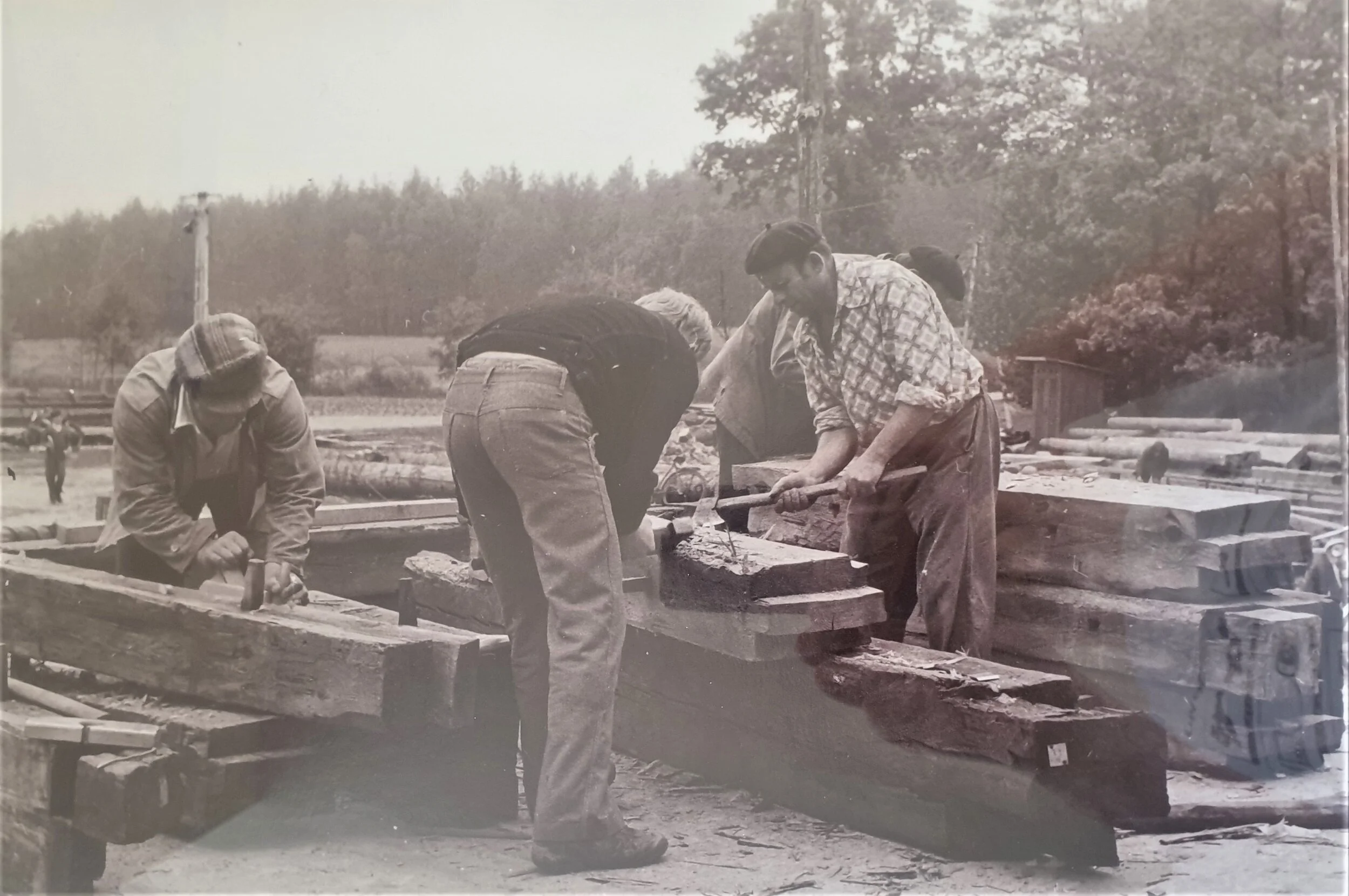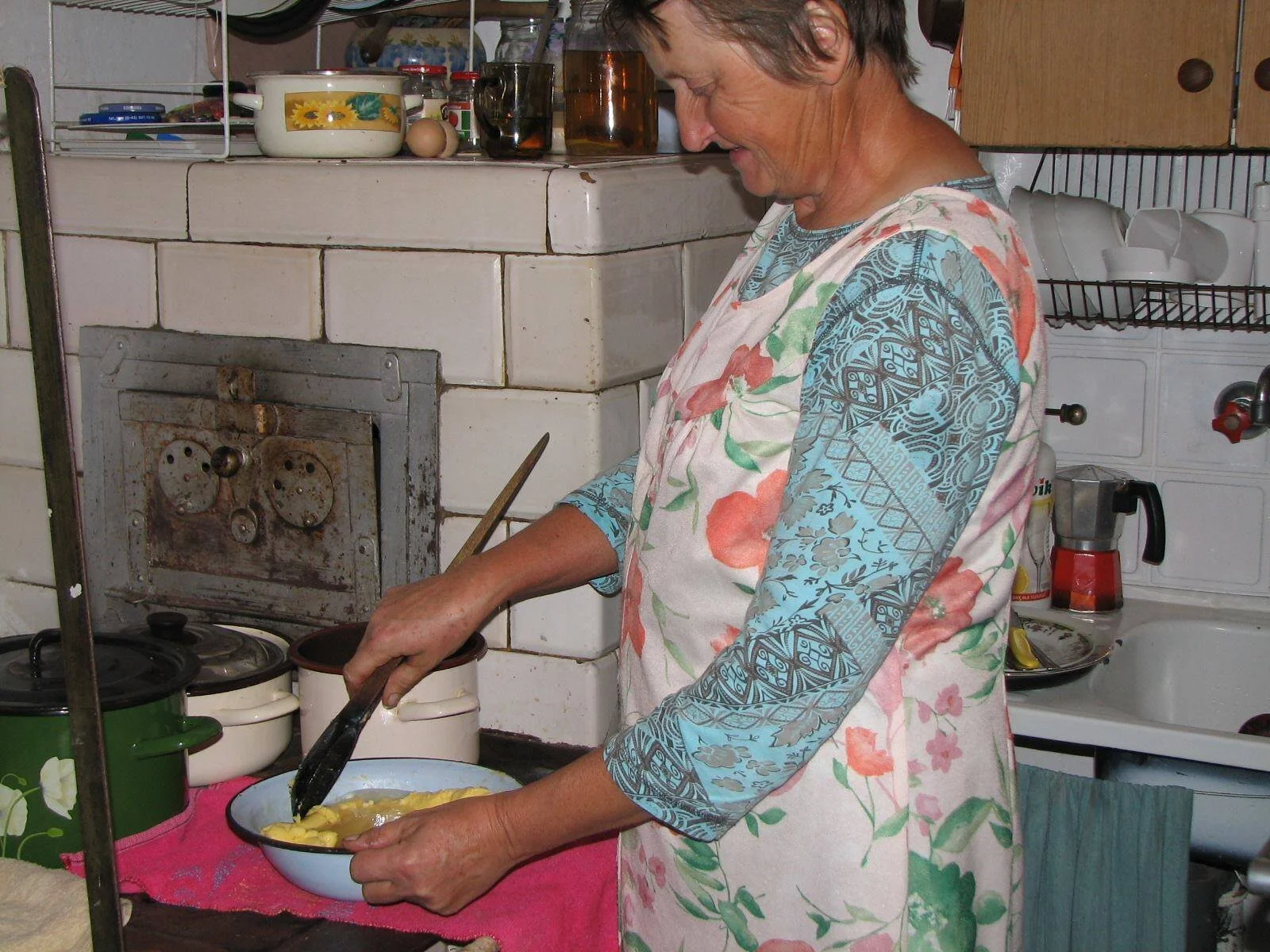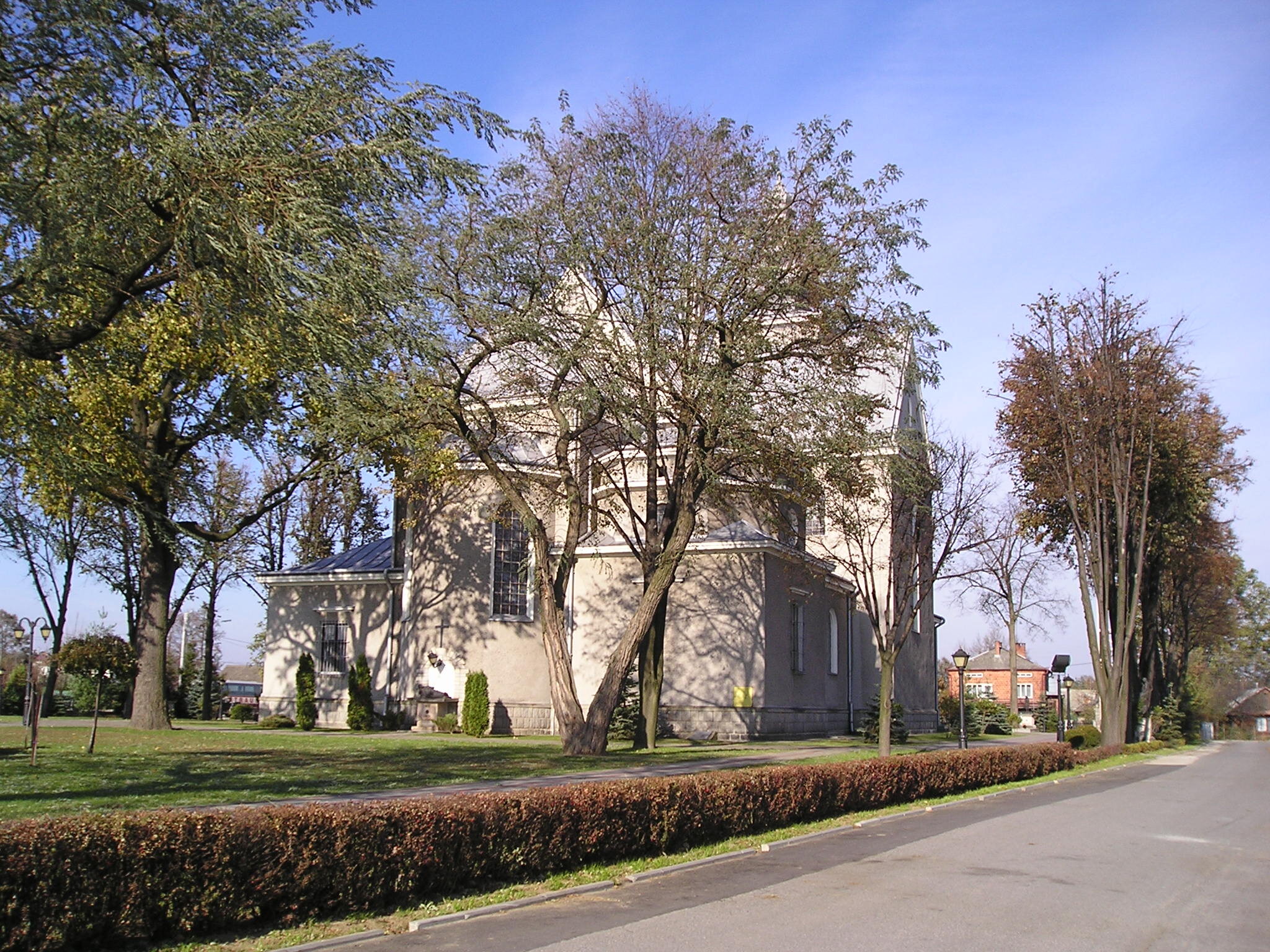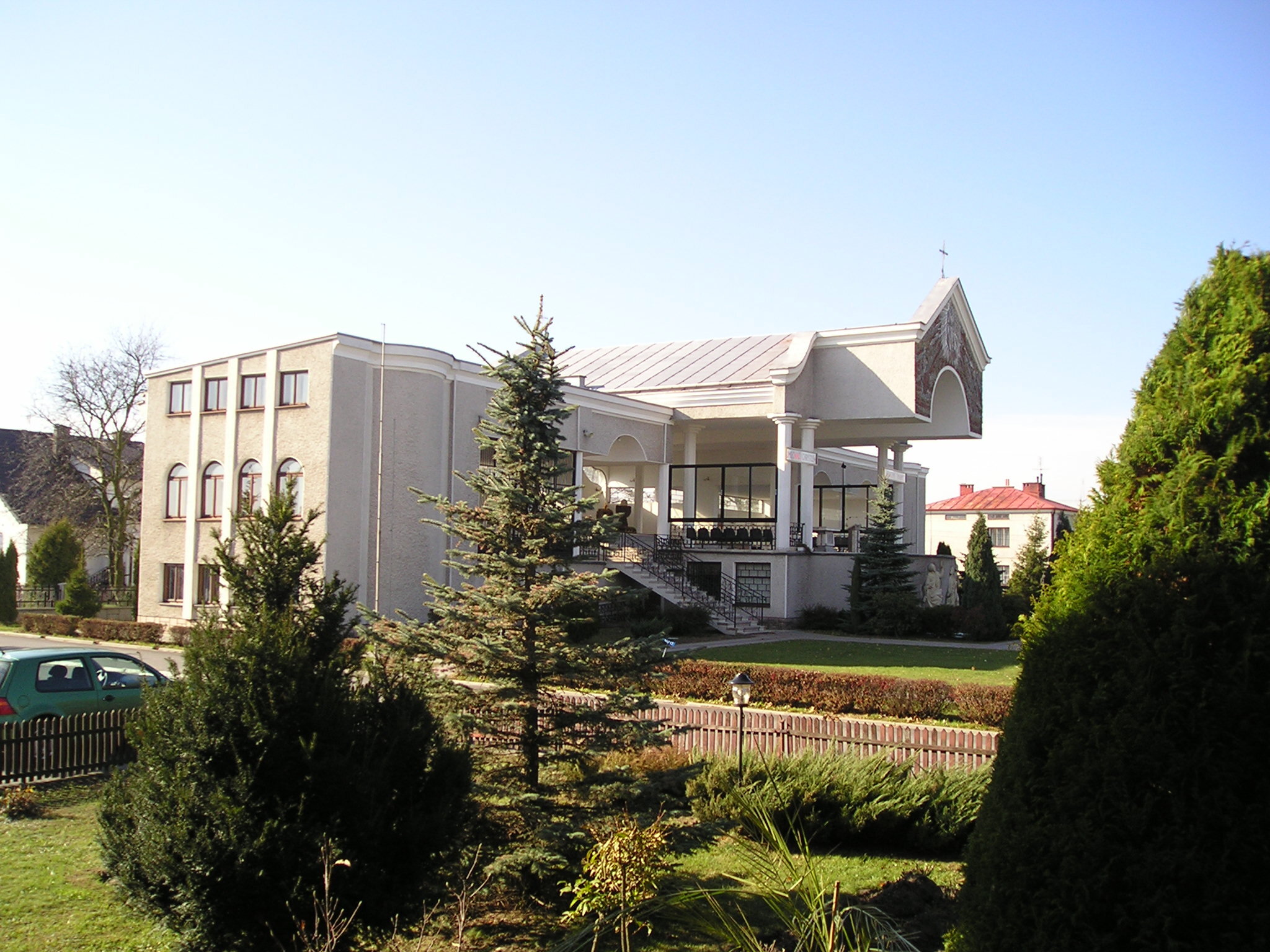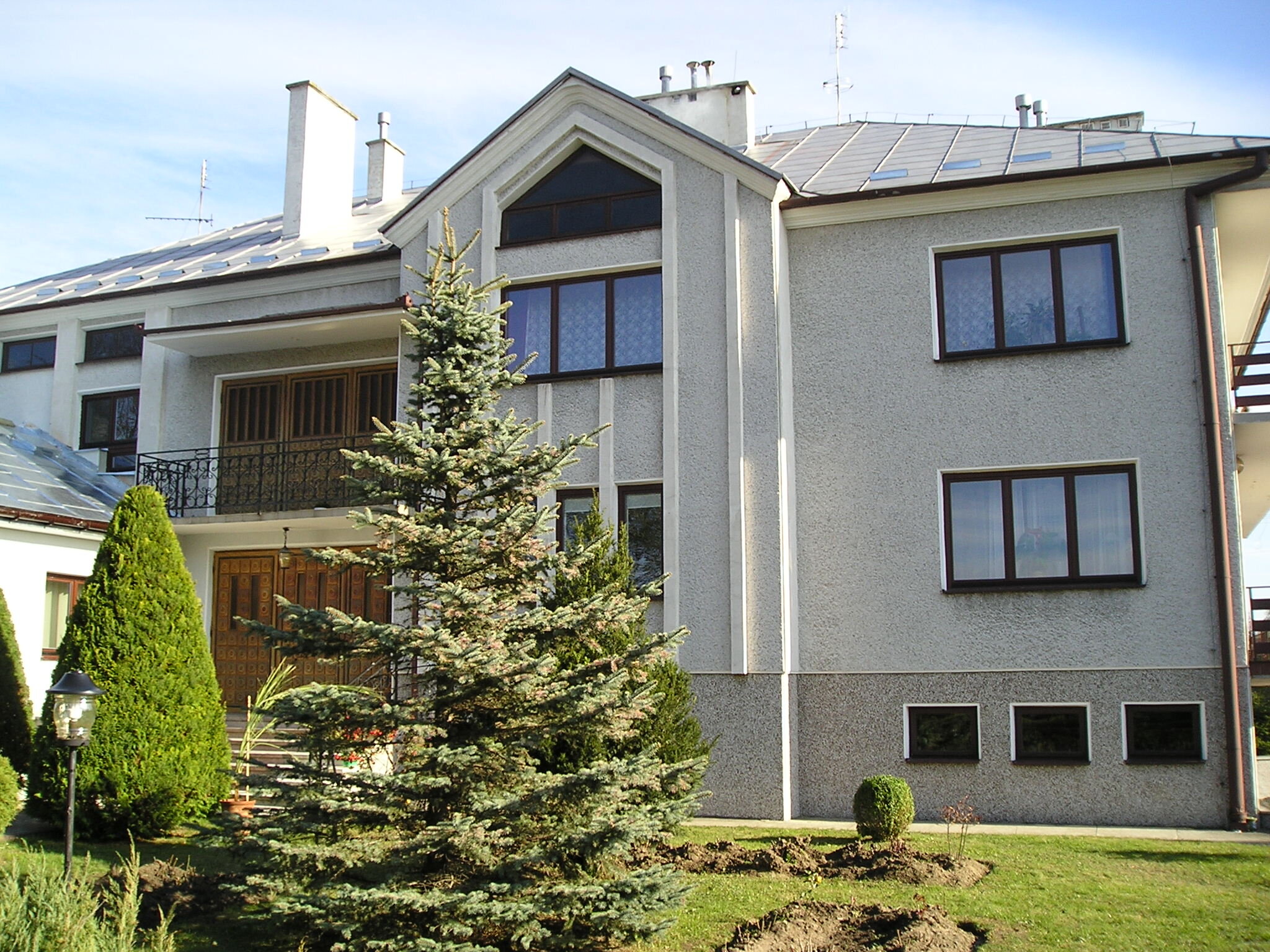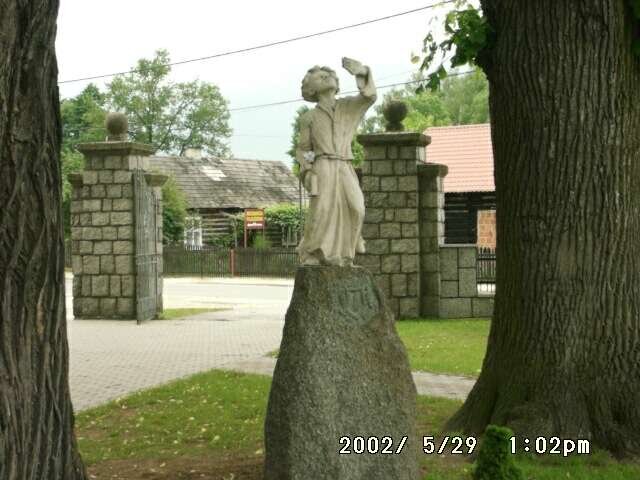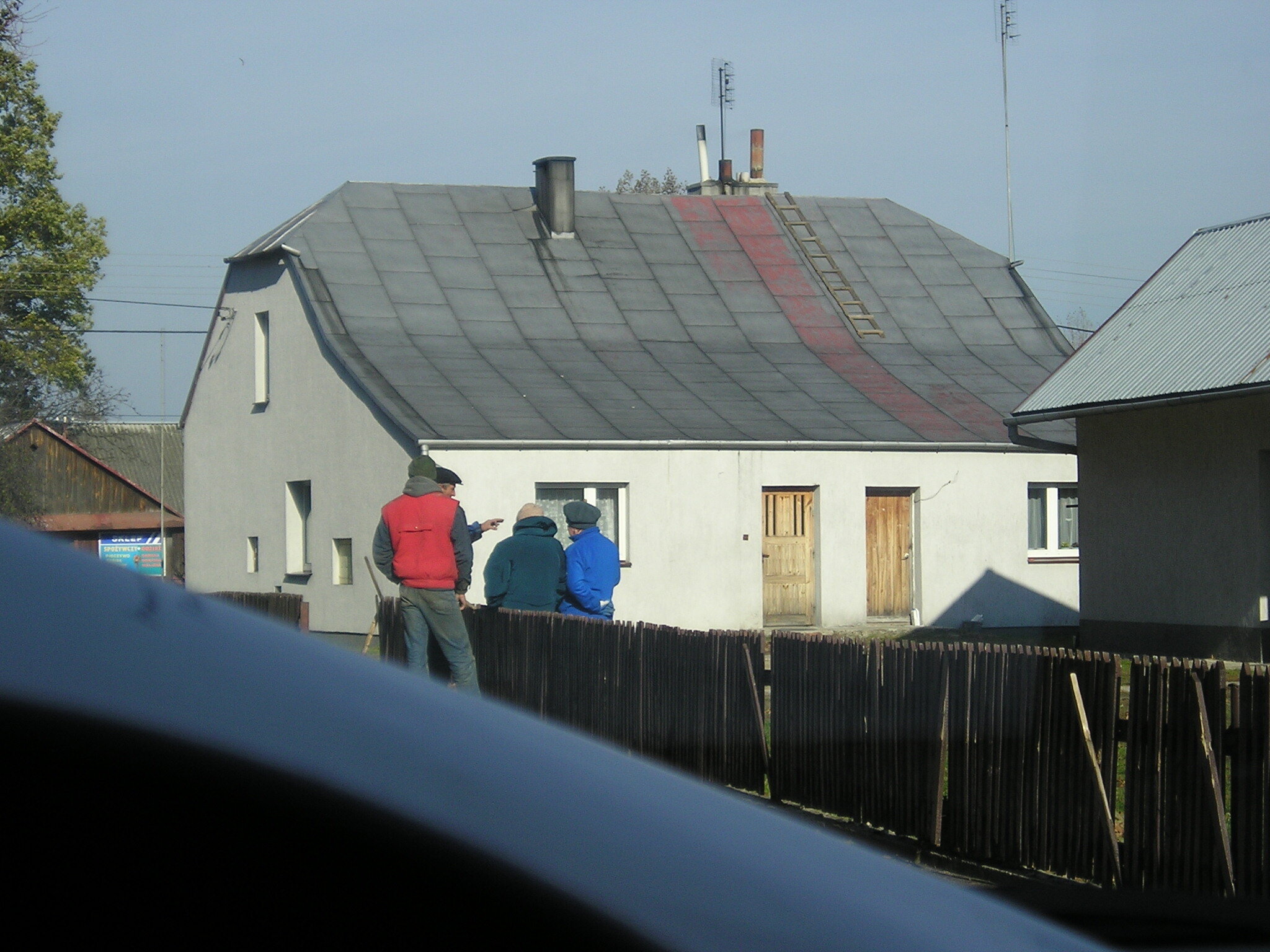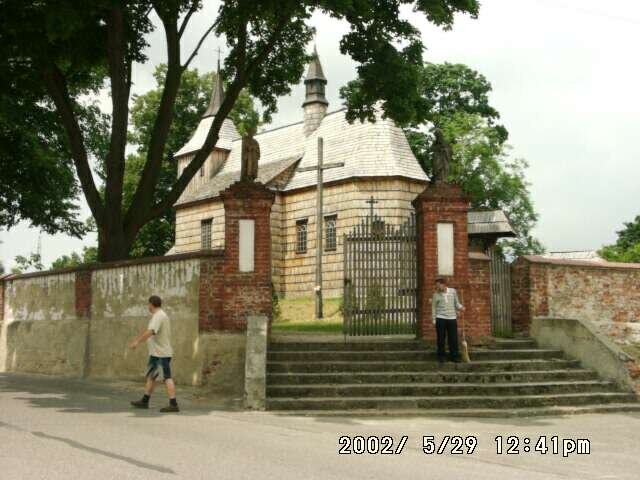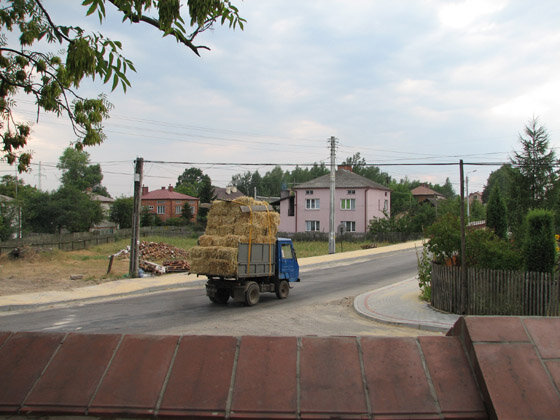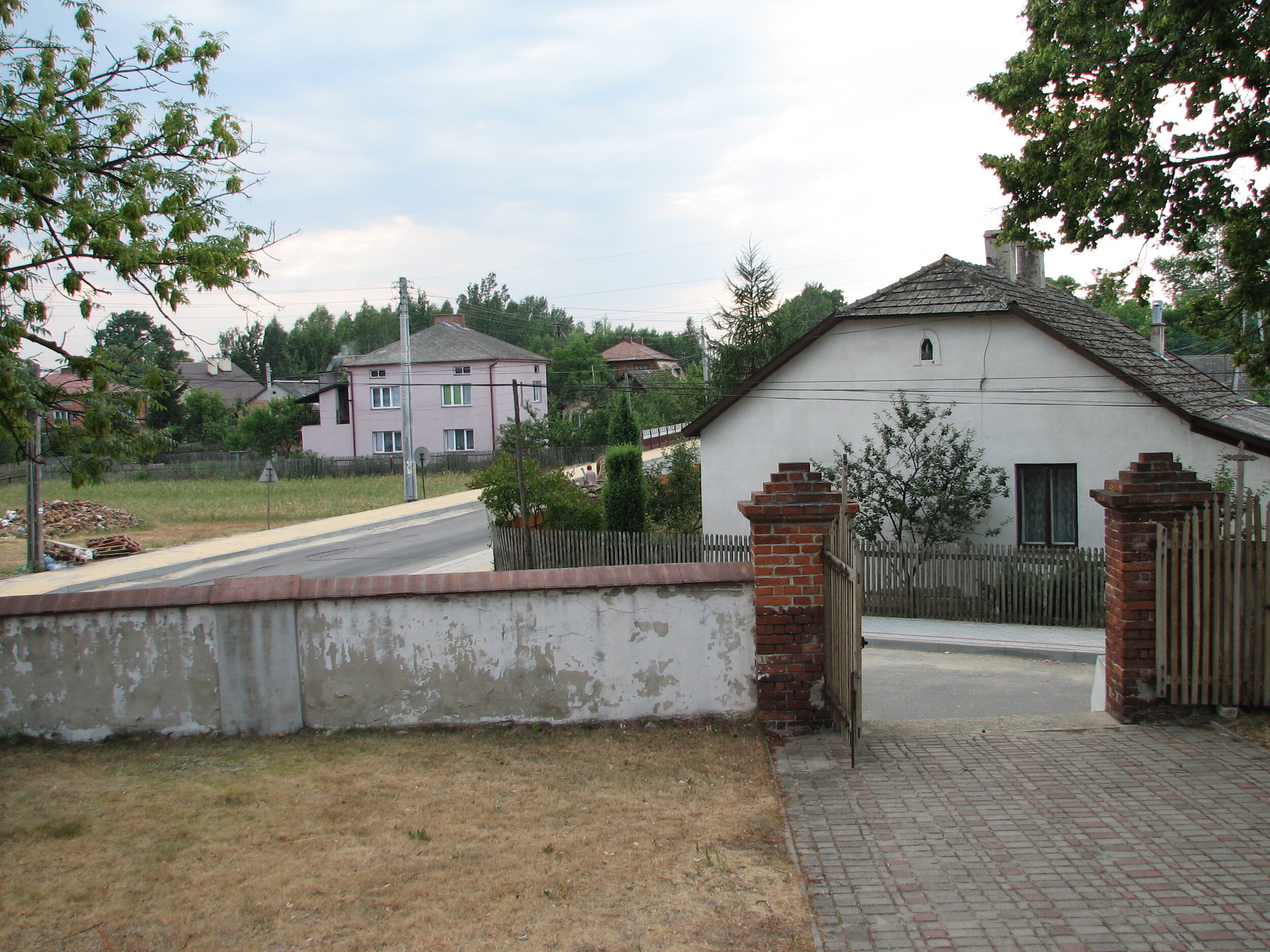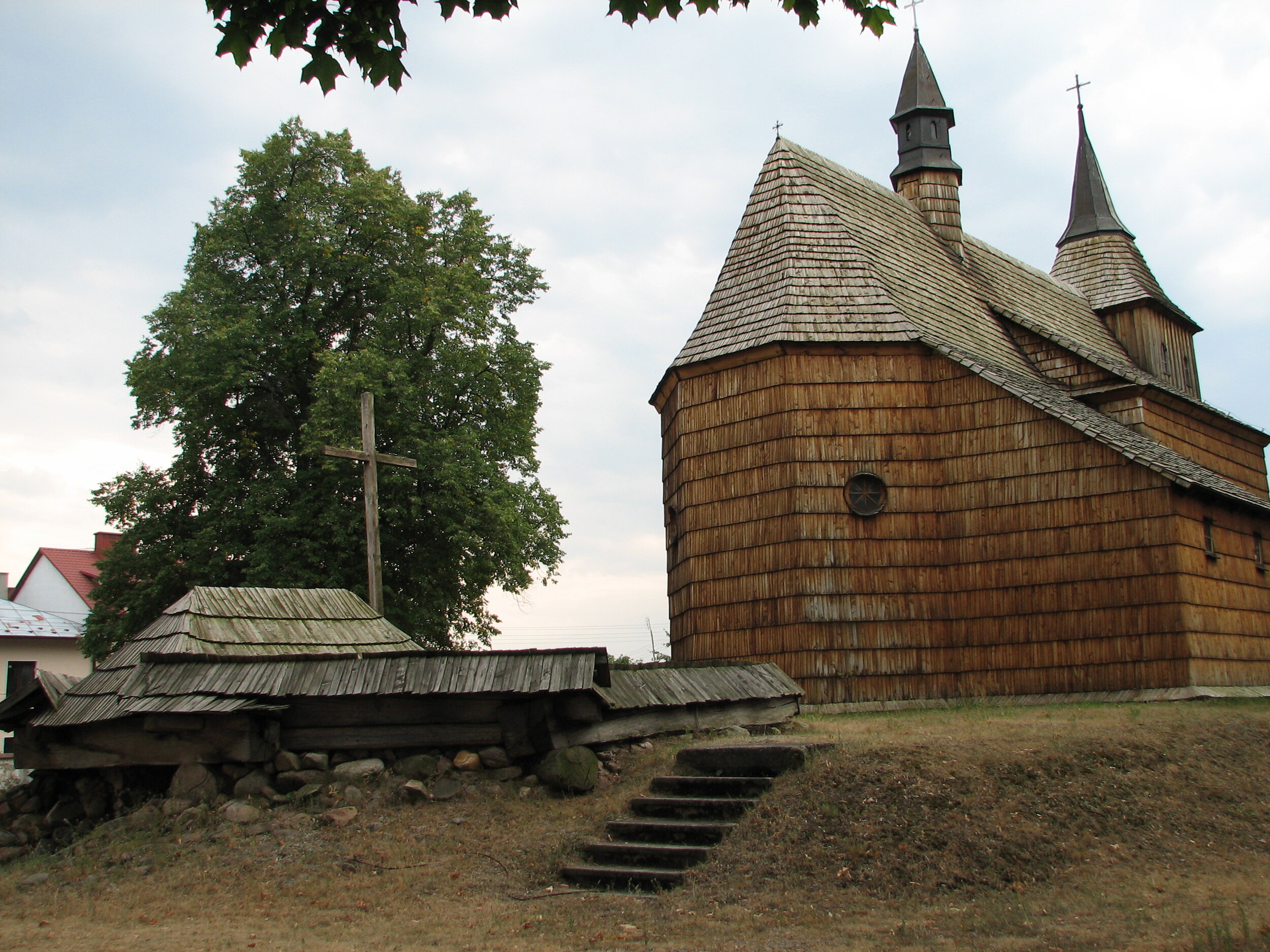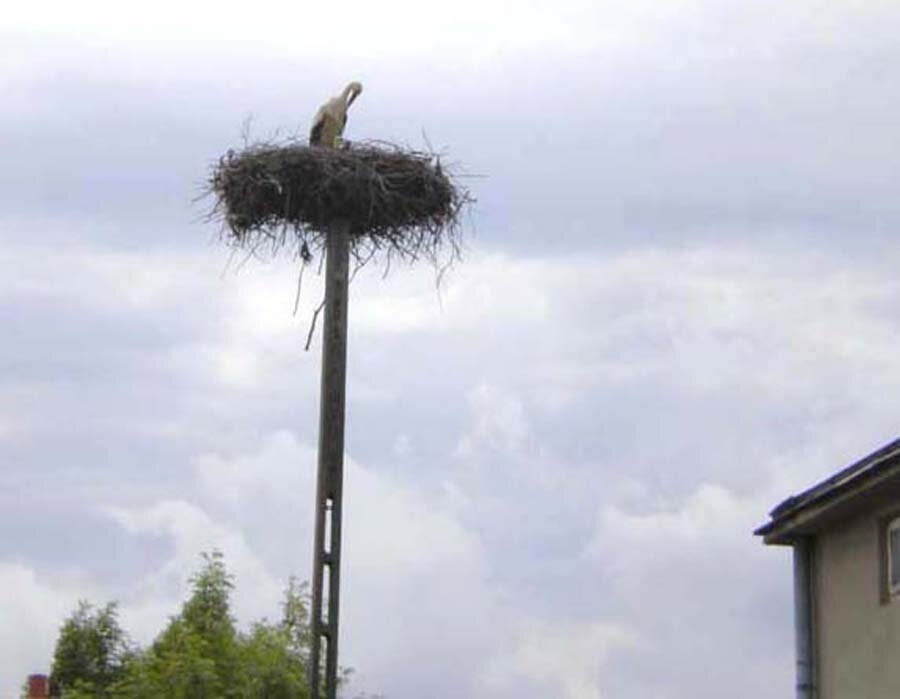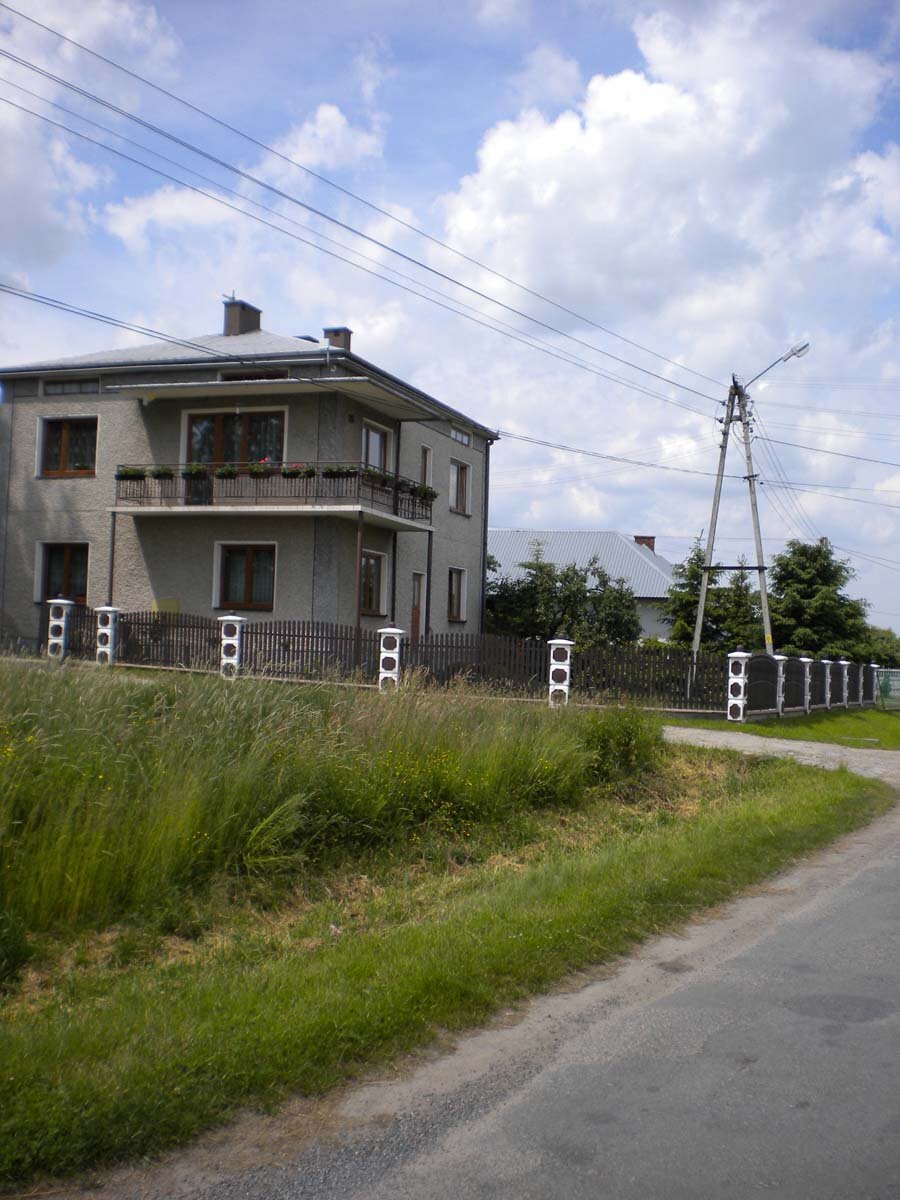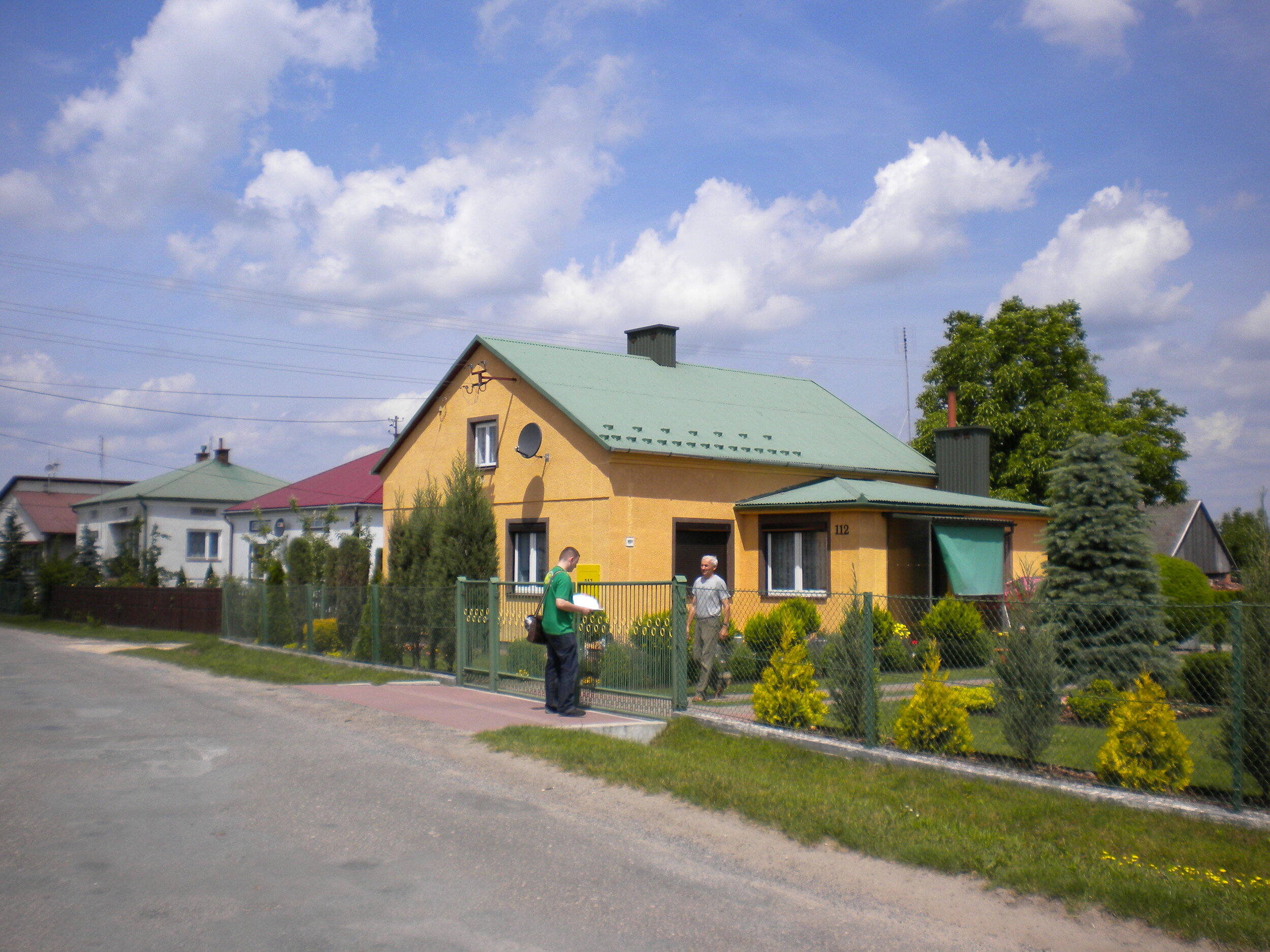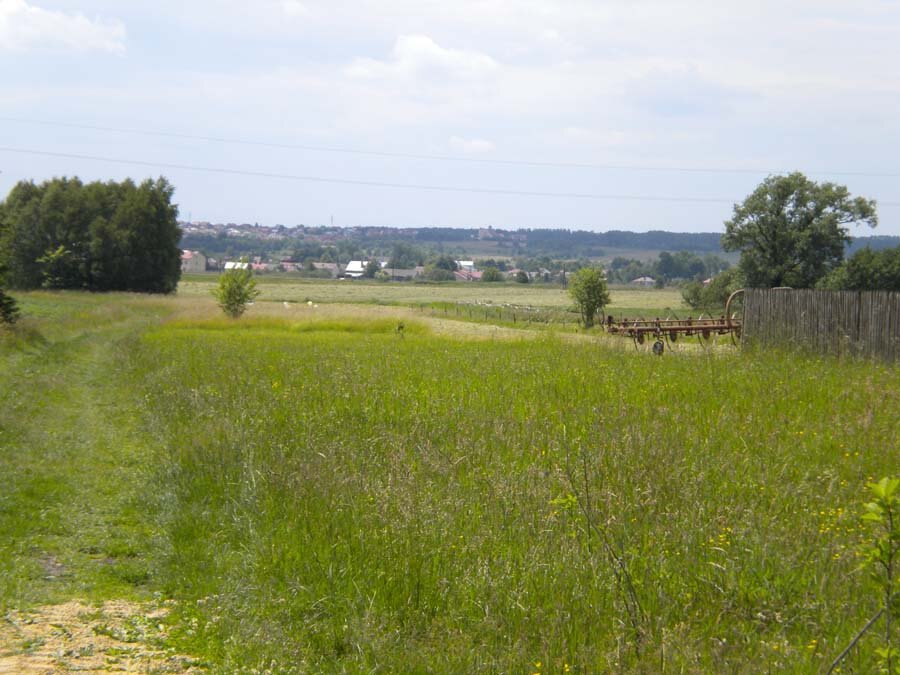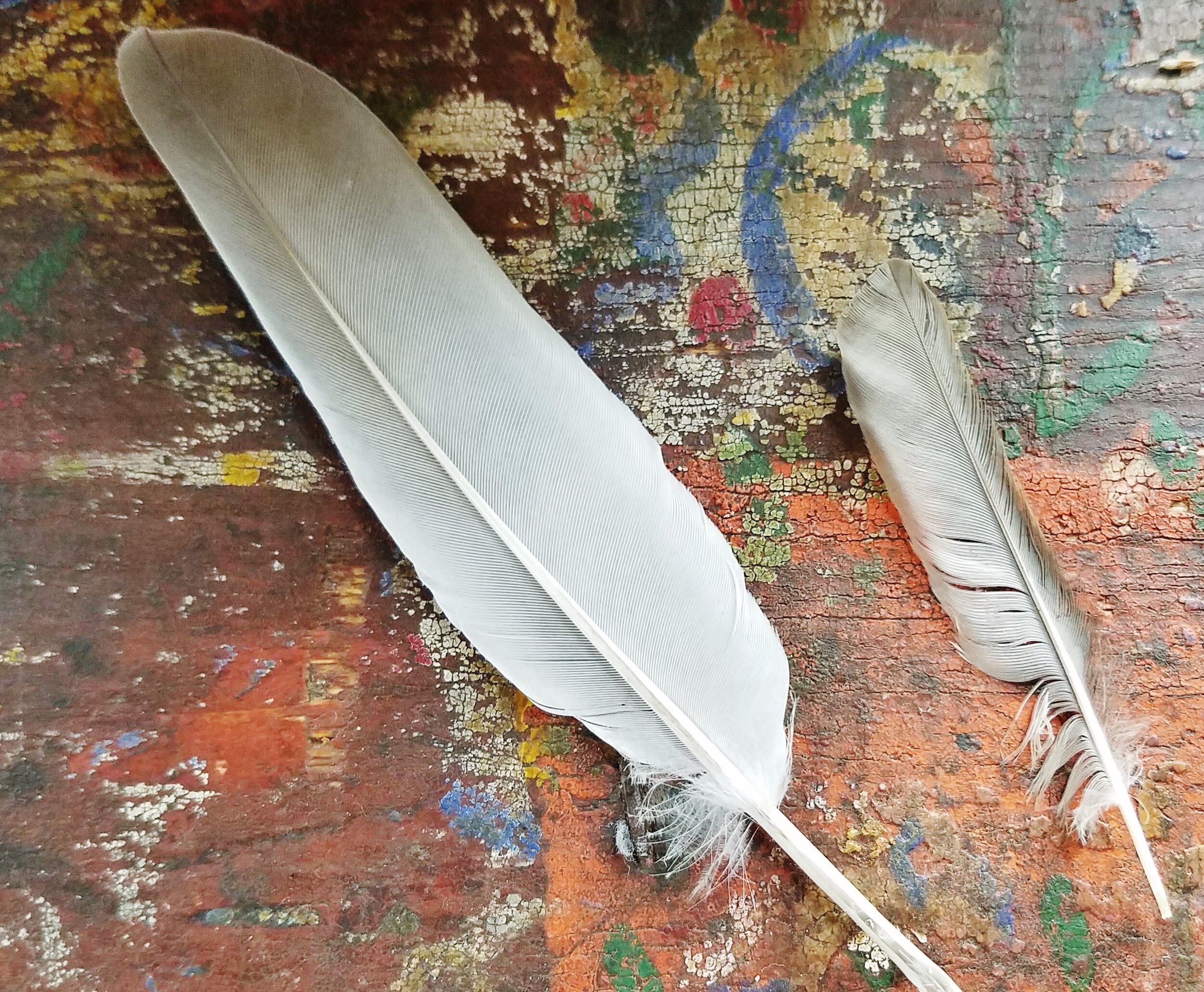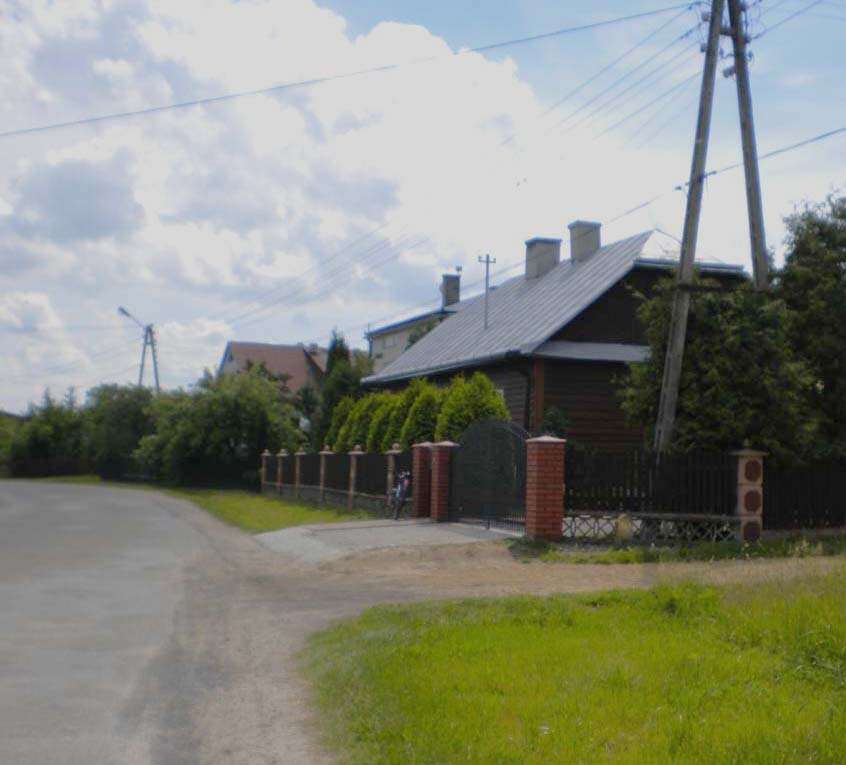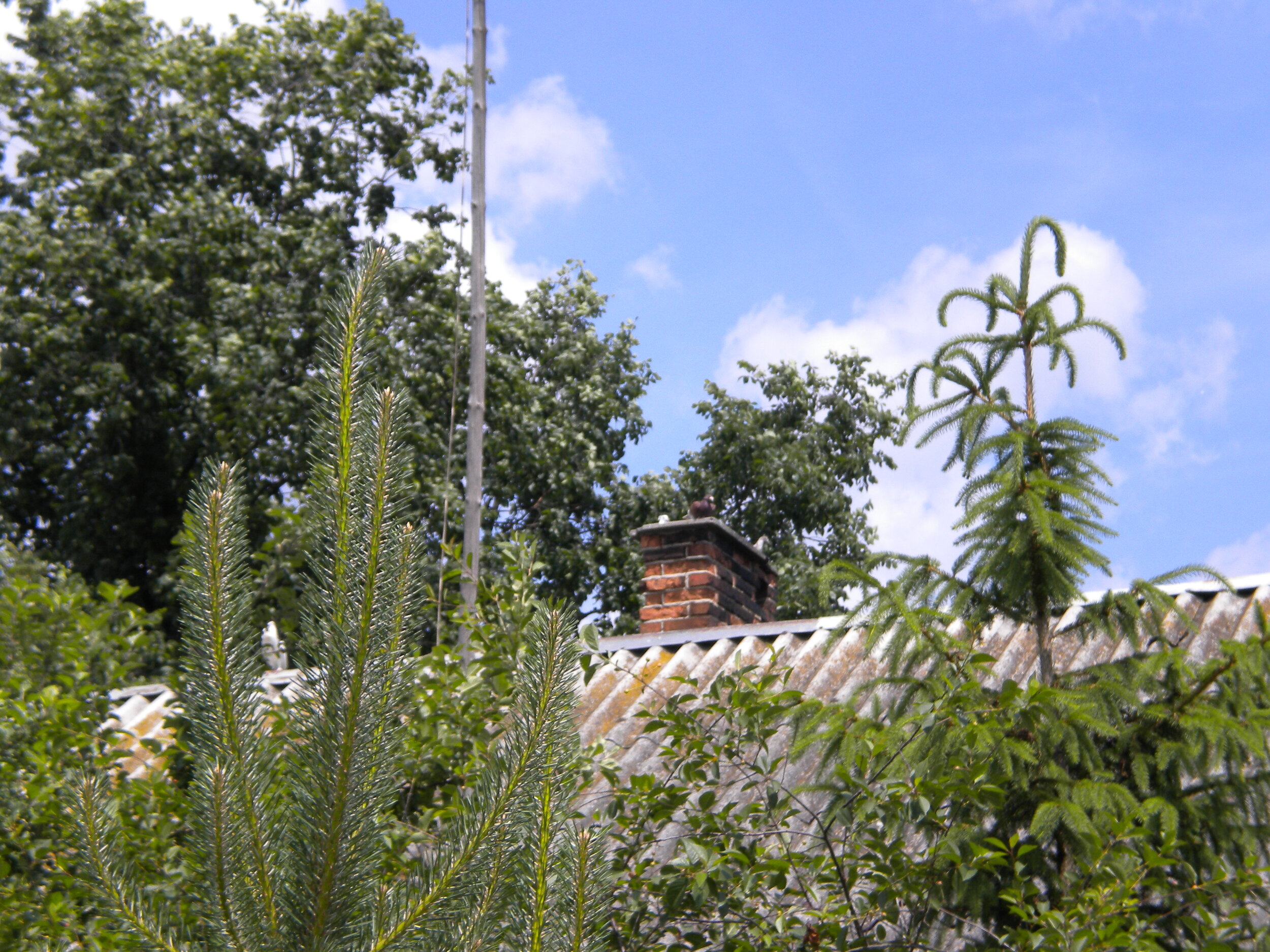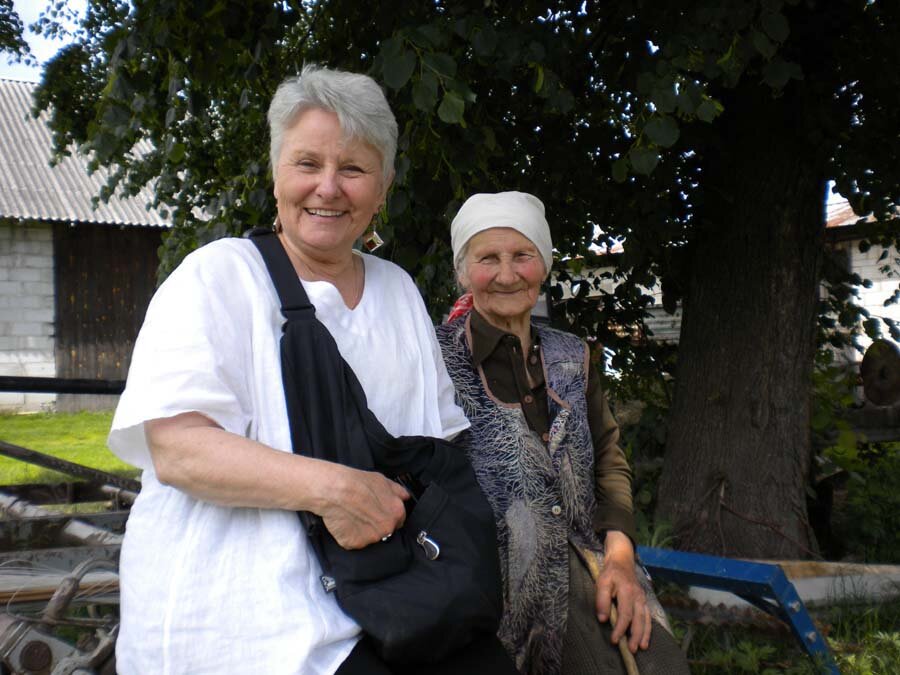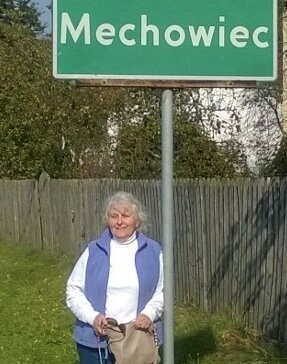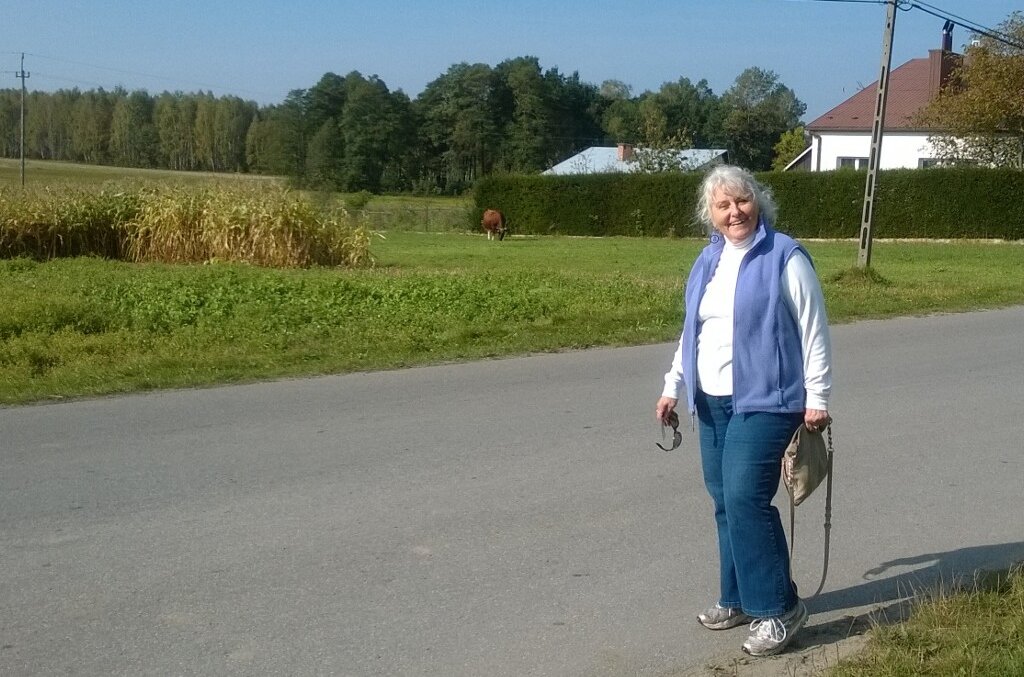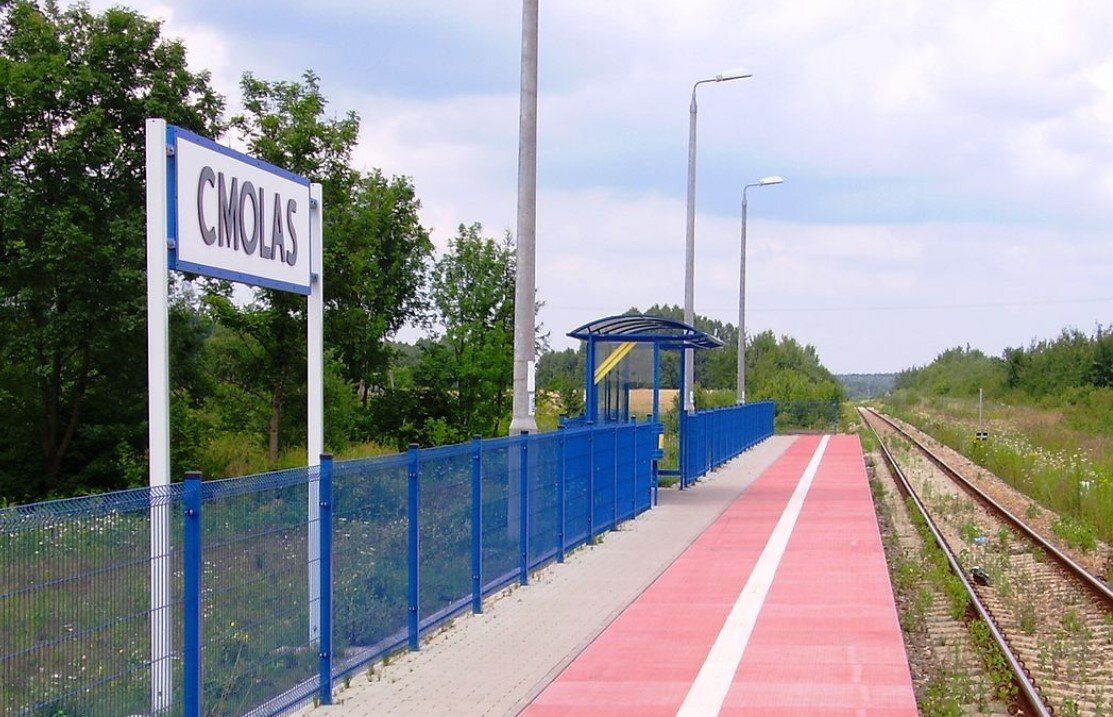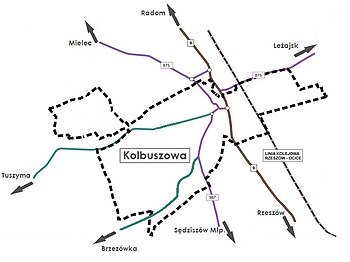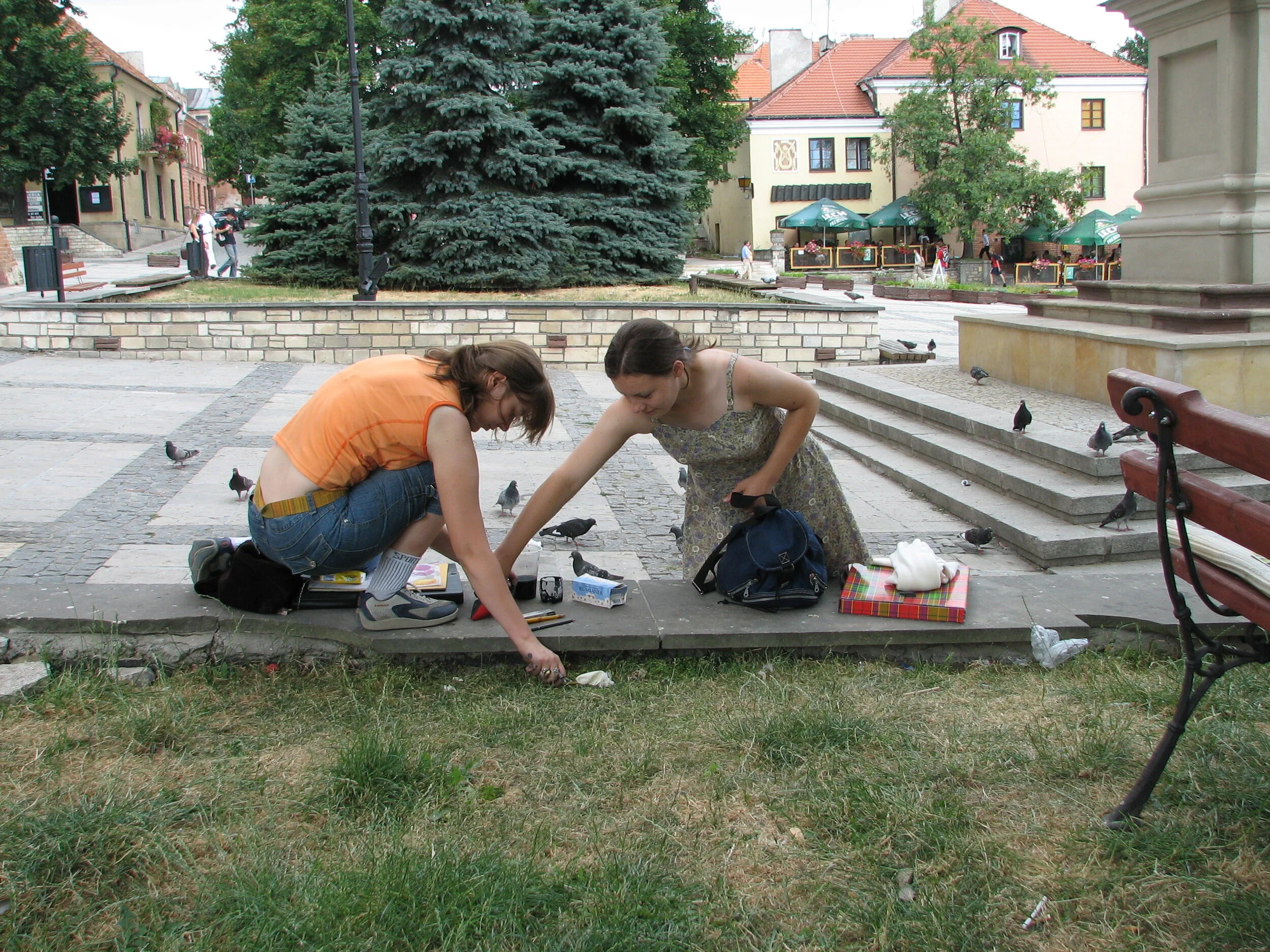First Stop: Warsaw (Warszawa)
Warsaw was my introduction to Poland when my husband and I traveled behind the Iron Curtain in the 1970’s. I fell in love with Old Town as I stood in wonder of how these stunning buildings were rebuilt brick by brick after the devastation of Hitler’s bombs. The story and film are housed in a small museum at the corner of the square and it made an indelible impression on me.
Today there are restaurants, shops, carriage rides and cafes that brighten the night.
I’ve spent a fair amount of time around Warsaw, fortunate to stay with my friend, Gosia who constantly schools me on Polish history and customs. I try to lap it all up til I am to my brim by the end of the day.
Our favorite restaurant on the square was the Gessler Restaurant, located in a basement space with signatures of notables all over the stucco walls. There were costumes and antiques decorating the rooms and the foods were authentic and delicious. Both Warsaw and Krakow have wonderful eateries and cafes below street level with archways built into the stone rooms.
There are interesting shops scattered along the narrow streets running from the historic square to the Royal Castle where elaborate furnishings have been re-installed after the plundering of war. You can find the craftsmanship of Kolbuszowa among the handsome wooden furniture pieces accented with inlaids and beautifully finished.
One of my favorite dolls, “Lala” came from a Warsaw shop and there was a wonderful lace curtain shop on our way to the Wedel Chocolatier. Wedel is known throughout the country, and sold in a store rebuilt identical to the original which suffered total destruction from the bombs of war. Clerks wear lace trimmed aprons and serve hot chocolate which you can enjoy in front of the fireplace or at the big windows looking out at the bustle of life.
On one visit we had lunch at the Blikle Cafe, also a rebuild and known to be a food supplier to the soldiers fighting hopelessly against the Germans, until the entire city ran out of food. Today you can enjoy scrumptious lunch in an art deco atmosphere while listening to American music from the war years. I was taken by all of it and sang along with the old recording, which tickled another patron, smiling at the American woman singing an American song in her city.
We heard that vintage music again on the day we visited the Uprising Museum, which was opened on July 31, 2004, marking the 60th anniversary of the uprising. - https://www.1944.pl/odwiedz-nas.html - You will see the American planes flown by brave pilots who knew their fuel would barely last until they flew over Warsaw, dropped bundles of food and hoped to make it back to English soil again. There are significant displays at every turn in this museum. It was a relief to sit in the reproduction vintage cafe to absorb all that had been presented, and be joyful that at last the Poles are allowed to tell their story about the fall of Warsaw-after being supressed by the Communist regime for so many years. The museum was created with some inspiration from the Smithsonian Museum of Washington D.C. using many interactive stations that help the stories come alive. Some powerful photos and exhibits as well as messages from Pope Paul and other notables give us a stark picture of how badly Poland was treated during negotions between Roosevelt and Stalin, while excluding Churchill as much as possible. And so the men, women and children of Warsaw fought until they could fight no more. Jews fought with Christians, young boy scouts risked their lives to carry messages, and there was enough spirit left at the end of it all to rebuild the city to the exact specification of the originals using paintings and photographs to duplicate what had been lost. I remember a partial iron crucifix on a wall - in the exact spot where the original hung - yet torn and bent.






There are stories connected to almost everything you see in Poland. Having Gosia with me to supply a commentary of what every statue, celebration and monument represented was a priceless education and indoctrination into her country, and that of my grandfather.
Each of my visits was full of surprises as the country began to develop following the opening up of international business and travel. The internet contributed greatly as it was blooming across the globe, enabling all of us to be in touch and understand one another better than ever before. Without the censorship of Communists the Poles learned quickly how to function, build, grow and flourish. Of all the countries from the Soviet Block, Poland was considered the safest investment with the hardest workers when various multi national companies began to expand into Eastern Europe.
There was a visit to a modern three level mall not far from Gosia’s flat. Her friend, Peter tagged along with us to enjoy a hamburger with an American woman in an American styled restaurant which featured Coca Cola. (I think they assume we drink it with every meal). It was astounding to me as I compared my first visit to this one. In the 70’s people stood in line in the street to buy a few apples. Store shelves were empty and people treated toilet paper like it was a luxury. This mall was as well stocked as any mall in America.
When Poland joined the EU I noted extensive road work projects all over the country. I did a lot of driving from Warsaw to Krakow, over to Kazimierz Dolny and back up to Warsaw. People have often asked me about the safety of driving in Poland. Some worry about highwaymen robbing you, massive traffic jams and all sorts of other imaginative situations. In truth, I’ve enjoyed driving in Poland moreso than in the US. Seldom is there enough traffic to equal my home town. I don’t find their drivers as reckless as I’ve seen in Boston, and the signage has been easy to follow. Gosia was assigned to read signs, but once you know the name of the town you’re heading to and the route number, it’s really quite a simple process. Car rentals were always watched by my Polish hosts. They worry about every detail, which I think is a throw back to the distrust of the Communist regime. I realized how much we trust certain business dealings. We assume there will be a car that runs, that the contract will be enforceable, and the prices won’t change mid stream. Peter checked every detail for me. I just paid the bill. Although I might order a car with an automatic transmission, I always got a 4 speed shift car. As a kid I learned on an old shift car and have owned a 5 speed transmission car, so I’m not put off by all that. The rates were better when I rented through the hotel clerk’s recommendation rather than through an online American company or even AAA. Gasoline prices are higher but again, it wasn’t too bad when you took the exchange rate into consideration. For instance, today’s rate is one US dollar equals 3.98 Polish Zloty. (they never went on Euros) Polish gasoline is 5.59 gal., but sold in litres. There are 3.785 litres to a gallon. It gets confusing, but I just go with it, knowing my overall expenses will always be a quarter of what they might be at home. Furthermore, these new gas stations were clean, often had decent sandwiches, and there wasn’t a batch of junk for sale… essentials…clean, plain, well done.
When I land in Krakow and rent a car to drive to Kolbuszowa, just about every bit of the road has been recently resurfaced. It tales a couple of hours to make that drive, but I have done it several times quite easily. Driving from Warsaw to the south you find more congestion around Warsaw but then you are away from the city and the landscape changes quite fast… to rural. I would never be afraid to drive in Poland.
Around Kolbuszowa
The Moving Church ~ Poreby Dymarskie ~ Ancestral Farm
I would never have found grandfather’s church if I hadn’t sat beside Vitek on a flight home from Poland. He was curious and asked if I was writing a book… seeing me scribble non-stop in my journal. At that time I didn’t know I was preparing to do exactly that. We marveled at the coincidence that I had been in Kolbuszowa which was his home and visited the Cmolas church which was his parish. I lamented the loss of the old church when he quickly corrected me that it still stands and was moved to Poreby Dymarskie, and in fact, it’s the church where he was married ! The Coincidences during my search have been mind boggling.
Of course that meant there had to be another trip to Poland so that Gosia and I could find the Rzasa’s church. My mind’s eye can still conjure the image of the young priest in his long black vestment teaching a summer school class as the sun shafts slanted across the carpet. Rich gold trim on the side altar, stars painted on a field of blue ceiling and ancient paintings along the side walls were obviously precious. I couldn’t believe I was standing where my grandfather had stood as a boy and young man.
Years later I was able to attend mass at this special church. Forewarned that seats filled early, I came 15 minutes before mass was due to begin. I squeezed into the last open space at the end of a narrow wooden bench and was enchanted by the sound of the Polish parishioners reciting the rosary in unison and continuing like a chant until the start of the mass.
I imagined my grandfather may have been an altar boy like these boys in white cassocks.
I don’t have words to describe what all this felt like for me. I was so lucky to experience those people, that place, that extraordinary time.
The old 1660 church was moved from its original location by local farmers using horses, men and wagons. Wladek gives us a description of the process:
“When they were moving church, all hamlets were put into groups and the leader had to provide how many men to work, some with carts. Every farmer had a horse - some of them even two.
Every log had plate number on it and they were wrapped in paper and then foil. You were allowed to have one log in one cart/wagon. Farmers were not allowed to sit on the log during transport, they had to walk to the new place. Then wooden logs were unwrapped and as there was communism, and we had no sponges, women were cleaning logs with fresh bread as it works same as sponge. Then logs were put into bath with conservation liquid. They made special wooden baths for logs.. than drying... etc. Every log was treated individually.”
Wladek’s grandfather was one of the men who helped move the church. “ Yes, my dad's father helped moving the church and there was professional guidance. My grandfather name is Bronislaw Rzasa, but all men and women from the village helped. People from Cmolas worked at Cmolas, they were taking parts of the church down. People from Poreby were moving church and putting all bits together.” Some sections needed to be rebuilt - interiors were restored. Paintings on the wall are very early.
There was a day when I received a message from a young man in Poland who saw my Cmolas pages on the Virtual Tourist web site. He was curious about this American woman with such an interest in his church and town. He soon asked me to write my story to be translated and posted on the web site he and a friend had created for Poreby Dymarskie. Of course I agreed and Gosia did her usual expert translation. That was the start of my learning so much more about my family through this young man, Wladek, who has become very dear to me. Our research has continued over the years and we discovered we are DNA matched cousins. He has shared his family and their farm home, which was once owned by one of my ancestors. Wladek and his family have allowed me to reach a depth of understanding and familiarity with the life my grandfather lived in Poland that I would never have been able to achieve without their warm, helpful nature.
The Farm
The farm operates much the same as it did in the 1800’s. The cow is walked and milked daily to provide all the milk, cream and cheese for the household. Chickens give them eggs, pigs are grown and slaughtered for meat and kielbasa. Every part of the animal is used, cooked, frozen, smoked and stored. Vegetables come from the garden, potatoes from the field, firewood from the forest and grain is grown to feed the animals. Wladek once joked that the only thing his parents buy is salt. Well, not exactly, but when fresh bread comes out of the oven to accompany hot rye soup with a dollop of lard, you know Wladek is not too far off when he says it. The fields are plowed with an old tractor instead of the horse which his father preferred but became too difficult to maintain. I got to drive the tractor once. We all had a good laugh over me as a novice farm hand.
Wladek’s mother, Maria bakes all the bread, makes the butter, and both parents are masterful when it’s time to slaughter a pig or make the kielbasa. The time I’ve spent watching the operation of the farm, riding the hay wagon, or being fed those wonderful pure foods have been very precious in my memory. These people have chosen to live this way. Mieciu is proud of his inventions, hand made to ease repetitive labor chores and Maria’s cow is a source of great pride as she walks to and from the grazing field every morning and night.
Poland is rich in farm lands that are frequently tended in the way Wladek’s family farm is tended. This bread basket of Europe has endured numerous invaders who know the value of that soil and the foods that come from it.
When I travel to Poland I spend a little time seeing the cities and learning about the culture there, but a trip isn’t complete without time spent in those very dear farmlands with borders of white birch trees, religious shrines along the roadway - rows of late apple trees and cabbages in the fields.
Kolbuszowa II Cmolas~Zarebki~Mechowiec
Within Kolbuszowa, or any other County in Poland, there are a number of villages and hamlets. A traveler would be hard pressed to know the difference between them, where one ended and another began. Often one road passes a few houses a farm, perhaps a church and often a religious shrine on a tree. There might be a little shelter just big enough to house one statue. And that’s the end of that village/hamlet.
I learned my grandfather was from Cmolas, so Gosia and I set out to find the traces of his life there. You’d have to read my book for the full explanation of our confusion about all the churches in this little crossroad, but this is where we found that lovely old priest who brought us in from the cold and patiently searched the church records of births and deaths until at last we found Marcin Rzasa, his parents, marriage, wife, her parents, and birth of their son, Peter. I heard grandfather’s name in the middle of the priest’s Polish conversation with Gosia and I knew he had found my roots. The decades of questions and searching had come to an end as that frail man’s finger moved down the columns of yellowed paper. His quiet , peaceful countenance was unmoved by my joyous yelp and obvious glee. We were so excited to find these records and order official copies of documents, that we left without asking about the older church my family had worshipped in - assuming it had burned down or was destroyed long ago. It would be years and another trip to Poland before I passed through the doors of that special church and learned the full story of its move to Poreby Dymarskie (more on that in next installment).
The following slide show includes photos of the current church, priests’ home and outdoor altar. The church grounds are considered a “Sanctuary” where a miracle is said to have happened and now people make pilgrimages to the church annually. Some services are held at the outdoor altar. The web site gives a complete explanation of the churches of Cmolas, their history, current services and activities, and a virtual tour of the interior of the contemporary church. http://parafiacmolas.pl/ The neighborhood is quiet and consists of small neat houses and what appears to be working class residents. The “Hospital Church” is close by on the site of the old wooden church of my grandfather’s time in Cmolas … which was later moved to Poreby Dymarskie.
ZAREBKI
Once I connected with Wladek I learned more about Cmolas. Prior to one of my visits, Wladek and his father went to the address in Zarebki, found in church records. They hoped to find family members, but unfortunately, there were no Rzasa people left on the street. When I visited with Wladek he knocked on more doors for information while I joked that the pigeons here must be descendants of my grandfather’s pigeons.
We hit it lucky when we tried another house and an old woman came out of the barn with her babushka, apron and cane. She was Miss Kapusta with sparkling blue eyes and wrinkles for each of her many years. Wladek translated as she spoke of her memories of the last Rzasa families who lived on the street with her. We all chuckled about the cousin who offended grandfather in a letter which caused him to stop all contact with Poland after that. Miss Kapusta didn’t like her either. It seemed the dislike for Victoria crossed all languages and generations.
Over the years Wladek has recorded the names of all the families who lived on the street with the Rzasa family and sometimes the diagram he drew provides helpful information for people whose family were neighbors of grandfather. I include it here in case your family was from Cmolas or Zarebki. (Again, please excuse my lack of proper punctuation for the name Rzasa, which should have a mark under the first “a”.)
Zarebki 1850, Kolbuszowa
It can be hard to follow the Polish system of creating house lots. Note my opening photo showing the map of long, narrow, wavy lines which are the property lines for each house “lot”. When farms were subdivided again and again, new numbers were added following the previous number… so you have numbers that skip all over the landscape rather than proceed consecutively. House numbers then take the same number, so you could be confused when looking for a particular house and lot.
For our purposes, if you find your family’s name on this list or the hamlet “map”, you can conclude that your family was in very close proximity to my family.
MECHOWIEC
A few miles away was another community known as Mechowiec. This was the hamlet my grandmother was from. Maybe 4 or 5 houses on a small road with cemetery and sign post were all we found. Wladek spoke to a neighbor to ask questions about my grandmother’s family, but there was nothing to be learned. Wladek sometimes mentions his ongoing curiosity about this part of my family tree but we may never know much more than we have entered in the Ancestry.com family tree. My grandmother’s maiden name was Fieluba.
Today there is a train stop for Cmolas/Zarebki and it would be a short walk to explore the hamlet. Trains run out of Rzeszow. Line 71 Ocice - Rzeszów Główny (31,115 km)
I met a DNA cousin who walked the area from the train stop and found helpful, welcoming local people. Poland visitors are often pleasantly surprised by the warm and helpful, sweet nature of the Polish people.
**See previous post for more about Skansen Village in Kolbuszowa… a tourist destination.
KOLBUSZOWA
Grandfather’s village in southeast Poland
On my first visit to Kolbuszowa, I traveled with my husband and daughter to find the place my ancestors were from. We had been investigating several towns with Polish friends translating for us, but now we had only a Polish taxi driver who spoke very little English. Although he was keen to practice his English and enjoy an adventure.
We first encountered the little square before turning a corner and finding two churches side by side… one older than the other. We attempted to get help from the priest, but no one answered the door of the rectory. Undeterred, Susan, the taxi driver, (Michael) and I explored the cemetery next to the church to see if we found our family name on any of the stones. None of the towns we had searched in had the name Rzasa (accent under first a) in any of their church records or phone books. Michael was the first to find a Rzasa monument… then Susan found another and we all kept finding more and more Rzasa stones. Squealing with glee, we knew we had finally come to the place where my family had lived. Unfortunately without a translator or time, we had to be satisfied with our discovery and hope to find more information on another trip or online.
We returned to the main square to a local restaurant named Krokodyl (Crocodile) and enjoyed a delicious lunch with Michael and the waitress who was overjoyed to have Americans visiting her restaurant. You must remember that this was not many years since the breakup of the Soviet Union. It was still unusual for westerners to be traveling in those countries. Added to that, we were deep in the hinterlands where American tourists wouldn’t be likely to travel even today. Many times we felt like curiosities to be studied and talked about. Teenage girls whispered and giggled at the sight of us. In subsequent years I returned to Kolbuszowa and visited the Krokodyl Restauraunt where the waitress told Cousin Wladek she remembered me from my early visits. What a sweet connection between us.
Susan, Michael and I found many cemetery stones with our family name, Rzasa.
One of the most interesting things I learned about this town of Kolbuszowa was that prior to WWII there was about a 50/50 mix of Jewish and Catholic population which co-existed peacefull. Films show this bustling square on market day with everyone going about their social and marketing business. King Kazimierz was responsible for welcoming and inviting the Jews to Poland and encouraging the peaceful interactions. In those years everyone stayed within their own ethnic and religious groups to live, marry and worship, but there could still be friendly and respectful relationships on a social level.
This report is born out in the Kolbuszowa insignia showing shaking hands with a Jewish star of David on one side and a Christian cross on the other - testifying to the town’s philosophy.
One of the newest additions to the town of Kolbuszowa has been the Museum of Folk Culture which is located in the former Jewish Synagogue c.1860’s which survived the wars, but needed considerable restoration. Over the years since WWII, it has been owned and worked on by various groups including the Foundation For the Preservation of Jewish Heritage in Poland. Eventually it became nationalized and part of the Library system of Poland which ultimately was able to fund the entire restoration. It is now known as the Museum of Folk Culture and serves as a library, gallery, meeting and exhibit space with occasional concerts, performances and lectures. To learn more…. click
http://biblioteka.kolbuszowa.pl/8-dla-czytelnikow/2132-oddzial-edukacji-kulturalnej-i-regionalnej.html?fbclid=IwAR3jRvcVOvsYD4qcHz6o_codyu-8NwXMBr1Pr8rYUL2ZKbaTbV47IFDEha8
Kazimierz
Kazimierz, the Jewish District of Krakow, is next to Wawel Castle on one side, while the historic Cloth Market Square is on the other side of the castle. This is a key point, because it is the reason the Jewish District survived WWII. When the Germans invaded Poland, they took over the castle which gave them a grand headquarters. Because it was their headquarters, there was no bombing in the immediate vicinity. Hence, the grand square and the Kazimierz District survived untouched by war. Rare to find an entire Jewish District completely in tact with Synagogues, restaurants, homes, business buildings and cemetery.
Over the years of my visits to Krakow and Kazimierz I’ve seen amazing changes, especially since the dissolution of the Soviet Union. Some families have reclaimed their property and money has funneled in to do massive amounts of restoration. Although nothing was destroyed, the buildings were never cared for throughout the period of Communist rule. Some of the Synagogues were used for storage warehouses. People were not allowed to live in or do business in the surrounding buildings. That dormancy for so many years, left its mark in neglect. Now each time I visit I see more buildings with a fresh face and I know it has taken millions of dollars to accomplish all that work. Look closely at the difference in buildings as you will see before and after versions standing side by side. Some buildings have a combination of restored windows and inaccurate windows in a building which is slowly being brought back to its original style. You can see the Jewish stars built into the facade of many of the houses.
Kazimierz has become an important stop
for tourists and there is signage to direct
you around the streets and explain what
various buildings are. I’m forever telling the
story of this special place, particularly to
my Jewish friends who would seldom find
an opportunity to see an in-tact
neighborhood complete with the oldest
Synagogue in Poland.
Alta Shulone
“one of the most precious landmarks of Jewish architecture in Europe”
.
Photo courtesy of: https://muzeumkrakowa.pl/oddzialy/stara-synagoga (see for more history/info)
“The Old Synagogue (Polish: Synagoga Stara) is an Orthodox Jewish synagogue situated in the Kazimierz district of Kraków, Poland. In Yiddish it was referred to as the Alta Shul. It is the oldest synagogue[1] building still standing in Poland, and one of the most precious landmarks of Jewish architecture in Europe. Until the German invasion of Poland in 1939, it was one of the most important synagogues in the city as well as the main religious, social, and organizational centre of the Kraków Jewish community.[2]
The Synagogue was built in 1407 or 1492; the date of building varies with several sources. The original building was rebuilt in 1570 under the watchful eye of an Italian architect Mateo Gucci. The rebuilding included the attic wall with loopholes, windows placed far above ground level, and thick, masonry walls with heavy buttressing to withstand siege, all features borrowed from military architecture.[3] There was further reconstruction work in 1904 and in 1913.[4] The Old Synagogue is a rare, surviving example of a Polish fortress synagogue.[3] In 1794 General Tadeusz Kościuszko spoke from the synagogue to gain the Jewish support in the Kościuszko Uprising. A plaque in the entrance hall commemorates this event:”





Kazimierz III the Great,
“son of Ladislaus the Short and Jadwiga of Kalisz, was the last Polish king from the Piast dynasty.
Kazimierz inherited a kingdom weakened by war and made it prosperous and wealthy. He reformed the Polish army and doubled the size of the kingdom. He reformed the judicial system and introduced a legal code, gaining the title "the Polish Justinian".[3] Kazimierz built extensively and founded the Jagiellonian University (back then simply called the University of Krakow),[4] the oldest Polish university and one of the oldest in the world. He also confirmed privileges and protections previously granted to Jews and encouraged them to settle in Poland in great numbers.[5]”
from Wikipedia
Fun Stuff in Kazimierz
Gosia and I always make a stop at the Four Shops Cafe. Originally there were four small shops in a row; one a carpenter, one a grocery store, a small lounge and a haberdashery. Restorationists kept the façade of the building, removed interior walls to create an open space, and left the tools of the trade in place. When you go in for a glass of wine, you might be seated at a sewing machine. We often sit beside the wall with musical instruments hanging on it. We’ve had wonderful Borsch on a cold day or a cappuccino on another visit. It’s a sweet little place - photogenic and always pleasant staff. Notice the stove that provides heat and is typical in many buildings. They vary in shape, size and color. Very decorative and cozy.
Ariel is a more formal restaurant with a menu to match its authentic decor. I don’t know if it’s kosher. Live music is enjoyed some evenings. A solemn looking man has always been at the door where you pay your check and buy post cards or little souvenirs. I have a small wooden carving that helps me remember the experience.
On one of my trips I stayed for three weeks so Gosia and I were able to wander and poke more than we would usually have time for. We explored the less popular streets in Kazimierz where we found a string of antique shops. There I learned that I couldn’t buy certain items because there are laws prohibiting them from leaving the country. So much has been lost to wars and invasions, I can’t say I blame them for trying to retain what is left of their material culture. I was admiring an old wooden trunk when the dealer spoke to Gosia about this restriction. However I was allowed to buy an old handmade vest which is probably from the 1800’s.
We came upon a little gallery that specialized in what they call “naive” art. I would call them “primitives”, but it’s basically folk art created by locals. Of course the Poles are known for their wood carving skills, but there was a chandelier I’ve never forgotten… should have bought it regardless of the bother and expense. They use paper for those delicate designs which are very popular at Christmas time.
We saw a farmer’s market on one of our visits. Apparantly some of the homes and apartments are occupied and re-settled.
All sorts of changes and things to discover in Kazimierz each time you visit. Be sure you spend at least a little time there if you visit Krakow. It really is a special district which is extremely rare in today’s world.
Hopefully there will always be a Kazimierz… and an independant Poland.
Ahhhh, Krakow !
Krakow is magical…
It is ancient - Beautiful - Entertaining - Educational - Fun - Original
The first time I was in Krakow, I was intent on my mission to find my family’s village and determined not to be distracted by a lot of sight seeing as a tourist. My husband and daughter were with me and my fabulous friend and translator from Warsaw, Gosia, was patiently guiding us through town after town as we investigated town hall records, libraries, phone books, and priests’ record books. There was no trace of the family name in any of the towns mentioned in family notes. My focus was rigidly fixed on my mission.
I had made arrangements to meet another guide/translator from Krakow, Joanna, who was investigating files at the Jagellonian University and other major depositories in Krakow to see if she could find any trace of my family.
Joanna and Gosia insisted we take a little time to enjoy a few of the highlights of Krakow, and so we toured Wawel Castle, the Cloth Market, we drank wine at a cafe in Kazmierz, and made a quick pass through Florianska Street past the medeival gate, and into stunning St. Mary’s church on the square. All of it was beautiful and I tried to absorb the history and information our guides were pumping into us … several hundred years being a bit too much to absorb in a day. Thankfully I had the opportunity to return several times to explore Krakow in more detail, but the experience helped me understand the way it is for most visitors who do whirlwind tours of several cities in a week and then go home.
One of my memories from that visit was of a store that was located on the square a few doors away from St. Mary’s church. It may still be there. Newspapers and magazines from all over the world were sold there. You could buy all sorts of things in numerous departments on several floors. We used the tiny old elevator with iron gate that expanded closed to reach an upper floor where there was a counter to buy time on one of several computers on a counter in a narrow alcove off the main room. Several Zlotys bought you 20 minutes of time on the computer and you waited if there were others ahead of you. It was a popular spot as there were only two “Internet Cafes” in Krakow at that time. We relied on locals to give us the location of these Internet Cafes in several cities. They were rare because computers were very new to Poland and it was before the advent of lap tops, smart phones, and computers in every home. It was September 2001 and we had just learned of the New York Twin Towers incident while we were in Warsaw. Unsure when we would be allowed to fly home, we were anxious to touch base with family and friends at home to stay up on the news. We lived in a bubble of Polish culture, language and beauty where the horrors in the US seemed unreal and so far away.
If you get to Krakow in the spring or summer you are likely to see the picturesque horse drawn carriages carrying a bride and groom around the square. They are sometimes applauded or waved at as they pass. It seems to be a special addition to the wedding celebration.
After dark…
At night the carriages are lit from underneath. The horses are always adorned with flowers, plumes, tassles or silver jewelry, of sorts. Their presence on the square is a joy to the photographers as they stand in line like a taxi cab line waiting for passengers to hire them for a tour. The driver does not give descriptions of what you are riding past but it’s all fascinating and beautiful, so just enjoy the ride. You’ll see Rennasaince, Baroque and Gothic architecture, often large sculpture exhibits, international travelers, and every vista is a delight.
“The Historic Centre of Kraków, the former capital of Poland, is situated at the foot of the Royal Wawel Castle. The 13th-century merchants' town has Europe's largest market square and numerous historical houses, palaces and churches with their magnificent interiors.”
This special place has been acknowledged on the WORLD HERITAGE LIST - UNESCO
There is a folk tale about the DRAGON at Wawel Castle, and you see copper dragons on the drain pipes spewing water in the rain. Of course it rained the day we were there.
Wawel Castle sits on a hill above the Vistula River and portions of the complex of buildings can be traced back to 970 AD but it has developed over centuries and the architecture is stunning.









There are many things to see and do around the massive old town square. Often I see huge sculptures displayed … perhaps a competition? I’ve always been fascinated with the enormous banners they hang down the side of a multi story building. I’ve seen this in several cities… Lipton Tea is one advertisement, but there are other slogans and promotions that I don’t understand. It’s the size of the banners that seems astounding.
Gosia and I practice the fine art of hanging out in every good coffee cafe we can find. There are many around Krakow square. ~ There are also many interesting and wonderful restaurants which have become more varied over the years.
Favorite Cafe
This charming cafe, outfitted in handsome woodwork, glass cabinets, victorian furniture, and painted freize around the top of the walls feels like an old Austrian cafe, and serves the best Apple Struedel along with great cappuccino. I’ll be so disappointed if it isn’t there when I go back. It’s been a regular stop on each of my trips and I am never disappointed. It’s a tiny place wedged among the shops on the square just a few doors from Florianska Street. I think that is the northeast corner of the square.
And for all the times I’ve visited, I cannot remember the name of it.
A Little French Restaurant
Narrow lanes run off the main square in every direction with yet more shops restaurants and guest houses scattered and waiting to be discovered. Gosia and I found a little French restaurant that charmed us enough to bring Matt (VT) and Urzsula back for another delicious dinner.
Krak Milk & Co.
Another fun coffee shop was tucked in a back street close to where we stayed in a B&B that was lacking in its breakfast offerings. The cafe’s white walls were decorated with huge posters of cow’s faces with big noses, which we found very funny when accompanied by my learning the comical word “Mooooch-ka”! (word for cow) Our silliness was unbridled at times. Combined with very good coffee and breakfast it made for a memorable morning.
Wedel Chocolate
Wedel chocolate is 5 star and can be found all over Poland. One of its premier stores and cafe is located on Krakow’s main square where you can find dozens of chocolates - in all degrees of cocoa from milk to very dark chocolate. Gift boxes are a definite take home idea, but after your purchase be sure to go through to the cafe further into the building. The ceiling is two stories up and opens to the sky. Seating is scattered with potted trees and the menu will have you drooling and undecided about where to begin. Lunch is offered but the stars of the show are the ice cream deserts served with that scrumptious melted Wedel chocolate, fruits and oodles of rich whipped cream.
Don’t miss this top. Skip lunch and go straight to one of the delicious Wedel delights.
I include their web address for you to explore the chocolate bonanza that is Wedel. https://www.inyourpocket.com/krakow/e-wedel-chocolate-lounge_34387v
I have more stories to tell about beautiful Krakow but I’ll stop here and save some tales for another day.
Zakopane in the Tatra Mountains
We boarded the big touring bus which made two trips up and down the mountain roads daily to Zakopane. It’s a pleasant drive and as we arrived at our destination Gosia pointed out the rock formation atop a mountain peak known as the Sleeping Knight which can be seen in the distance. We were following up on another lead in finding my family in Poland. We had learned about the artist Antoni Rzasa when we were in Sandomierz. We had been told there was a gallery in Zakopane and so our latest adventure began. Gosia hadn’t been in the Tatra Mountains for many years, so she was keen to see it all again. Zakopane is known for its hiking and skiing vacationers, hence the main street has lots of shops and restaurants that appeal to tourists. For local color there are a number of open carts with older women in babushkas selling their special cheese, Oszczypek, which is a smoked cheese made of salted sheep milk and made exclusively in the Tatra Mountains.
We were expecting to find the Rzasa Gallery along the main street but after searching, lunch and more searching we resorted to asking people if they knew of the gallery or its location. This is where traveling with a native speaker is invaluable. A taxi driver knew where we needed to go and he agreed to take us there and return when it was time to get back to the bus.
As we arrived at the property with the little gallery sign, we were reluctant to drop in without an appointment as it was obviously part of someone’s home. But here we were and after so many miles, we boldly knocked on the door. A handsome blue eyed, curly headed man opened the door and Gosia gave him the short version of why we were there. He invited us to enter the gallery space while Gosia elaborated on my family search and questioned him about his family. When you are a party to these conversations it calls for great patience. To me it seems the smallest question or response is laden with so many syllables and consonants it leaves me wondering if they’ve gone off on another explanation and I’m missing something. Sometimes Gosia deals with a situation in blocks of conversation before she stops to translate the basic information to me. However she is quite capable of translating as quickly as you speak and thinks in two languages simultaneously. She is amazing to listen to. I sometimes have to end my questioning or expectations and remember to let her rest. Although her capacity is great, it does get exhausting by the end of a visit.
We learned his name was Marcin, which of course charmed me, as my grandfather’s name was also Marcin Rzasa. He talked about the sculptures around the room although many were not yet positioned for viewing as if they had just brought everything back from a show or exhibit and hadn’t put things in good order again.
He talked about his father’s work, how they were promoting it without selling anything, and they expected to have an exhibit in Italy soon. His favorite piece was also my favorite… he felt it was like his big brother because it was always with them from the time he was born. It’s a stunning sculpture which predominates any presentation of Antoni Rzasa’ works.
Marcin didn’t seem to have much information for us, but his wife had come along to meet us and Magda graciously invited us in for tea in their kitchen. Magda spoke fairly good English so there was a mixture of conversation in two languages as we sat casually as if we were neighbors stopping by. I was taken by the photography on the walls and learned it was the work of Magda, an artist in her own right. She had captured her husband and children in some very interesting candid poses and lighting.
We learned that Marcin was also a sculptor and we were brought to another studio space to see his work. Where his father worked with an ax and sturdy chisels to create the dramatic and sizeable pieces he was known for, the son’s work was predominantly miniature, delicate and sometimes comical. My favorite pieces were carvings he did of his wife and daughter but there was also a piece with straight chairs piled in a pickle jar. Each one was beautifully smooth and finished in what appeared to be a blonde wood. I wanted to buy a piece of his work, but like his father’s work, he refused to sell it. He couldn’t part with these pieces which seemed to hold part of his soul in them. Persistent as I was, I asked if he could duplicate one for me and he was resistant but eventually said he would try to accomplish it by the last day we would be in Krakow.
As for his family tree, both Marcin and Magda seemed to know nothing beyond the immediate relatives who came from the Rzeszow area about an hour south of my family’s roots. They all concluded there was no connection but I knew how few people with this name existed in Poland even at that time, so I’ve been convinced we would one day find the connection.
It was a lovely visit, but their children needed attention and they both teach and create in addition to daily routines, so we concluded our visit, grateful for meeting these very gracious and tolerant hosts. Marcin walked us out and stood with the sun glinting in his hair as we waved goodby from the taxi.
The following days were full of cafes around the square, a bit of shopping and then a rental car to drive to Kolbuszowa. We visited Wladek’s parents on the farm in Poreby Dymarskie which was so meaningful for me, knowing one of my ancestors once lived there. Heading back we drove the narrow road surrounded by farm fields on both sides, as far as the eye could see. . Gosia’s cell phone rang and when she answered she looked stunned. The man at the other end greeted her with “This is Marcin Rzasa.” After a hesitation, she realized it was the artist in Zakopane and not my grandfather calling from the great beyond. We howled with laughter afterwards. He was calling to say he had finished a little sculpture for me and he would send it down the mountain with the bus driver. Evidently the regular bus drivers were familiar and often carried parcels or mail for the natives of the village. As it turned out, Magda decided to meet us on our last day in Krakow and we enjoyed coffee together in yet another cafe as I turned the little carving in my hand over and over - smooth and perfectly formed. It is a duplicate of the one Marcin carved as a representation of Magda when he married her. She stands on a shelf in my study as a reminder of a very special meeting.
I look forward to finding the connection between Marcin and me in the Family Tree.
Virtual Tourists Meet in Krakow
I was a regular contributor to Virtual Tourist.com when it was one of the top travel sites on the internet. Thousands of people checked in to post pages about their travels including hotels, restaurants and other recommendations or to find information to plan their own trips. A rating system from visitors brought members’ pages to the top of the list for most popular tips. After several years I was among the top 100 members who were loyal to the site and we became an on-line “family” of spirited travelers learning about each other and the world.
Because I was researching my family in Poland, traveling every few years, I developed pen pal relationships with several Polish members. We had screen names and one member, Matt Crazy published thousands of photos of his trips with his wife, Urszula. When I was destined for Poland again I would notify Matt of the dates and we’d schedule a meeting for dinner in Krakow.
Planning a return trip to follow the lead on Antoni Rzasa in the Tatra Mountains, Gosia and I were enthused to meet up with Matt and Urszula in the old square in Krakow before continuing with my research.
I flew into Krakow and had a hotel van bring me into town. I had stayed in the small privately owned hotel (a Virtual Tourist recommendation) on another trip with Gosia, so I was comfortable with my surroundings. Gosia would arrive by train a few hours later so I walked the narrow streets lined with shops into the large main square. I visited a favorite lunch room looking out at flowers and passersby on the busy square. They served a delicious salad with chicken, almonds and bib lettuce which I enjoyed during several visits. The atmosphere in the Redolfi Cafe was very special. Handsome woodwork, lace curtains, photos of glamorous women from another decade all contribute to the ambiance. The wait staff didn’t speak English but we managed and they were very kind. In those days there weren’t a lot of Americans visiting Poland and I was often greeted with curiosity and wide smiles, making me feel like a good will ambassador. I was also a novelty because of being a woman of a certain age traveling alone internationally. You must remember how much Poland changed after the Iron Curtain fell coupled with the advent of personal computers becoming available. Changes didn’t happen fast for them so the behavior of society often seemed about a decade behind us, especially in rural areas. I saw such a transformation between my first visit during Communism and the later trips when more prosperity was evident.
After lunch I headed over to a small market on the square, where Gosia and I liked to buy a few snacks, morning coffee and a bottle of wine to keep in our hotel room. I chuckled to myself as I moved through these activities as if I were a native to the city. So familiar it had become; I’ve always felt as if I came home when I got to Poland. Thankfully Gosia arrived on time as planned and after getting settled we wandered the square until it was time to meet Matt and Urszula.
Dinner was in the oldest restaurant in Krakow - Restauracja Wierzynek, ( c. 1364 above the door). Matt suggested this one and it was an excellent choice. Located on the main square, its a treasure not to be missed. Formal young men in tuxedos served a delicious dinner in the spacious dining room and the evening couldn’t have been any better. Urszula didn’t speak English so she was happy to find lots to chat about with Gosia, while Matt continued his picture taking and we all had fun with my Halloween earrings which they seemed charmed with. I wore them for fun and left them with Urszula to enjoy.
http://wierzynek.pl/en/ - You would enjoy the photography and menu on their web site.
These Virtual Tourist friend meetings always made me feel welcome and somewhat familiar with the city. I recommend travelers always try to develop pen pals to meet on arrival to a foreign destination. Unfortunately Virtual Tourist.com no longer exists, but members stay in touch through Facebook.
So you want to write a book…
It all begins with an idea.
When I decided to write a book about finding my Polish ancestors, I went on a major exploration of publishing options, marketing outlets and I interviewed a half dozen authors to find out how they viewed the joys of publishing your book.
Ultimately deciding Self Publishing was the best fit, I got several proposals from book designers and publishers, then made my choice to use a terrific book designer, Cliff Snyder of 10am Creative Media in Canada who would prepare my cover, art work and text for Create Space, a self publishing division of Amazon.com. My work would be available for sale internationally and I ordered discounted hard copies to be delivered to my door.
I was advised to take the initiative in distribution and marketing, use social media, create a web site and do book signings.
There is so much more beyond actually writing a book. Step by step I learned to set up
the web site, http://www.journeyintopoland.net/,
a Facebook Page https://www.facebook.com/journeyintopoland,
and I joined ARIA (Association of Rhode Island Authors) to take advantage of their schedule of venues I could sign up for to sell my books at book fairs, libraries and their annual EXPO, which has been held at Rhodes on the Pawtuxet (lucky me - local!) I joined the Massachusetts Genealogical Society, Ancestry.com, and had my DNA done (as well as Uncle Michael‘s). Then I was interviewed for an article in the local Warwick Beacon Newspaper.
Head spinning, I began to hear from relatives I didn’t know I had - or hadn’t seen in many years. Strangers wrote to thank me for helping them to search for their family and others got in touch because they loved Poland, liked the photos on Facebook or enjoyed learning about a country they knew little about. The book goes in directions I couldn’t have predicted and brought me reviews I’ve been humbled to receive.
Now it’s finally time to see what the Blog will do for us. I hope you’ll leave a comment, let us know how you found me, and connect with others you read about here. Some of you are cousins!!
Where are you?
It all begins with an idea.
Karen, Christopher, Susan, Me, Wladek, Nate and Carol at the Book Launching of Poland; My Roots in Grandfather’s Village, Pawtuxet Park, Warwick, RI.
Somehow Nate Plaza found me and after a few emails, I suggested I write to my cousin Wladek in Poland to ask if the family names he was tracing were the correct spellings (often they are not, but a knowledgeable Pole usually knows the proper spelling). Wladek returned the message saying not only was the name spelled properly, but Nate’s family was related to his mother’s family! Back to Nate to ask where he was - New Hampshire. Ah, my son just moved to a job in Nashua, New Hampshire and they’re house is in Hudson. Oh, my! Nate lives in Hudson just about a mile from Christopher!
Of course we had to meet at Christopher and Karen’s house, visit Nate to meet his wife, and they came to my book signing when the book was finally printed. What fun. Everyone messages back and forth occasionally and the family trees are enhanced as pieces fall into place.










It was great fun to discover Cousin Richard from Montreal and have him come to RI for a visit with his sweet wife, Ju… but there was a bonus! When he read my book and realized we had these DNA connections, he contacted another cousin who had grown up with him in Canada but now lived in Italy! Now we have another cousin in Genova, Italy - Don Pilarz - and we’re in touch on Facebook regularly.
Don is an interesting guy who retired from the career he was schooled for, and now he works at what he loves. He began making guitars. No slouch either, take a listen to the music of his beautifully crafted instrument here - https://guitarmind.it/prodotto/don-pilarz-2014. As if that wasn’t enough, he has now embarked on the painstaking task of building violins. I’m waiting to hear one of his hand made instruments played by a performer on You Tube. They say there are at least 250 steps to constructing a violin and so many secrets to learn about creating the sound you’re looking for. Stay tuned for more on this talented cousin.
Don Pilarz Guitar
Sandomierz - Surprises
Sandomierz
I drove south from Warsaw to Kolbuszowa with Gosia reading the map and sign posts; me trying to pronounce the words; her correcting my impossible Polish. It was hot and we were parched, so when we came upon the little town of Sandomierz, it was time to take a break. We found a cafe overlooking the square and sat under bright red and white umbrellas, giving us respite from the heat of the day. There was lots of activity in the square as people were preparing a huge performance tent and stage for an upcoming concert of Sea Chantys. It would have been nice to hang out a while, but there were miles yet to travel, find the hotel we had booked, and finally get to Kolbuszowa. We made a plan to return on our way north after our mission involving my heritage was finished.
At that time there were no hotels in Kolbuszowa, but Gosia had located a business hotel attached to a little castle known as Baranow Castle. Surrounded by beautiful formal gardens, there is an additional modern building with hotel rooms and conference center. As we checked in at the desk, the clerk apologized that his modern rooms were full but could give us a room in the castle itself. What!? No apologies necessary and we hustled over to find the door to enter. It opened to the biggest room I’ve ever slept in… with huge round wooden table in the center of the room, couches, chairs, a couple of beds and enough extra space to include a marching band. We howled in joy and laughed at our absolute good fortune. Our window opened to the courtyard with archways and columns, reminiscent of the Wawel Castle in Krakow. The following day there were wedding groups arriving for photographs here and there and we loved seeing a happy bride and groom waltzing outside our window.
After touring the castle, dinner and a good night’s sleep, we pushed on to Kolbuszowa to explore a few leads we had found since our last trip. More on Kolbuszowa later.
It was time to head north again and returning to Sandomierz, we had time to drive past the 14th Century stone Sandomierz Royal Castle which can be toured, but we only took time for two of Gosia’s favorites. A church with stained glass windows depicting beautiful flowers rather than saints and crosses… and then the Diocesan Museum, which was in an ancient house left to the church. Gosia’s interest in going there was to see Queen Jadwiga’s gloves which were on display. Gosia knew the legend connected to the gloves and really enjoyed the opportunity to see them first hand. Traveling by car with me was a treat for her, enabling her to see things she normally wouldn’t be able to enoy because she traveled only by train for business and she’s never driven a car. So into the intimate little museum we went.
More about the museum and Queen Jadwiga’s gloves - Click below
https://www.domdlugosza.sandomierz.org/dom-d%C5%82ugosza---r%C4%99kawiczki-kr%C3%B3lowej-jadwigi
In the Museum
No AC in this mideival structure, so I didn’t last very long. I caught a little breeze in the entrance hall and sat on a wooden bench opposite a young priest waiting for Gosia to complete her tour. When she joined me, she was struck by what she saw just behind me. There was a a book with only one name on the cover. ANTONI RZASA. Dumbfounded to have searched so long and here we accidentally happened upon it. The priest picked up on our surprise and conveyed to Gosia (in Polish) that the exhibit which was here was the work of the artist with that name. His exhibit was in its last day, so we got there just in time.
Antoni Rzasa
Of course we returned to the exhibit and reviewed each piece with more personal interest. Antoni Rzasa carved his sculptures with an ax if you can imagine such a thing. Chisels and skill must have played a big part. The intricacy he achieved was astounding and the emotion they evoked was dramatic. We learned that he created a school and gallery in the house he built in Zakopane up in the Tatra Mountains. Now we had a new location to add to our list of places to explore in my search.
Antoni Rzasa
We felt very fortunate to have stumbled upon the work of this artist with my family name, especially in the final hours before the exhibit would be taken away.
I bought the book which holds a place on my shelf with the many books I’ve collected and read on Poland over the years.
We babbled for some time with the priest and each other as we walked out the path to the sidewalk and turned up the street. As we chattered about such an amazing circumstance, I looked to the ground where a feather lay right in my path. How we laughed and Gosia had to admit there must be something to all those feathers! (If you haven’t read the book, you may be confused about the feathers.)
I Held My Breath
Previously I felt uncomfortable visiting Uncle Michael and Aunt Jenny. They were polite and attentive to my stories of Poland and our family, but at the end of each visit, Michael would return to the dark memories of his childhood. Sometimes my aunt made excuses for why I couldn’t visit. When Aunt Jenny died, my uncle seemed to sink into a deeper despair.
I delivered my newly published book and waited to see if Uncle Michael would read it - acknowledge it - or throw it in a dusty corner. What transpired was the reaction I could not have imagined.
I visited and talked about the book along with the Family Tree I was building on Ancestry.com. Finally mustering a bit of courage, I asked, “Did you read the book?” “Yea, and ya know what? The best part was page 119.” I rushed to find his copy, turning to page 119. I laughed when I found it. It’s the page with a photo of he and Jenny as I retold the story of how they met and my mother’s wedding day.
Soon after I realized the man had an incredible mind, remembering my birthday, dates of military service, names of people involved with the family, all sorts of details which I, 20+ years younger, couldn’t do. Uncle Michael opened a flood gate of memory on that day and it just kept on coming with joy and amusement at each visit.
Cousin Wladek came from Poland, a newly discovered cousin came from Montreal, Michael’s kids gathered, and my son came from New Hampshire with his wife. Everyone enjoyed the stories, pictures, and my ‘Kielbasa making’ video made at the farm in Poland. Such joy - Michael absorbed all of it like a sponge.
He told detailed stories no one had heard before. In the Army during WWII, he landed on the beaches of Normandy on the second day of the invasion, waist high water, dead men all around him - He marched through France, Belgium and Austria with ground troops for a year and a half. He met General Eisenhower when he delivered a letter from his wife. He met General Patton. He served his time without complaint and rode a ship back home at the end of it. He never got shot. He had no battleground fatigue. He went home to his wife Jenny, worked in a factory and raised 5 children. He and Jenny were married for 72 years when she died.
Uncle Michael taught all of us a lot in his last days. Without my book we would have missed so much. We lost him in 2017 at 97 years old.
You can copy/paste this link to hear Podcast of this story.
Walk through Skansen Village in Kolbuszowa
It all begins with an idea.
Wladek, Gosia and me … looking like a happy Cheshire cat.
Being with the two of them in Poland has been an absolute joy in my life.
Skansen Village, or the outdoor museum of culture, is not far from where my grandfather lived in Kolbuszowa. There are several of these “created” villages scattered around Poland. They have collected buildings, furniture, equipment, wind mills, and farm animals to create a reproduction 1800’s village which now includes a church, visitors center and a growing assortment of architectural elements. You can walk through, look in windows, enjoy the ducks and goats while getting a first hand look at life in Poland over 100 years ago.
http://www.muzeumkolbuszowa.pl/
Note: My photos are followed by a link to a YouTube video of Skansen Village which is really worth watching on full screen on a computer.
I hope you’ll be able to explore one of these wonderful attractions yourself one day. If you have already seen it, please leave comments for others.
Connections
It all begins with an idea.
Cousin Michael
My cousin Michael called one day, surprising me because we had never had a personal conversation. He had just finished reading his father’s copy of Journey Into Poland. He said, “I am not a reader, but I sat down with it and didn’t get up ‘til I was finished. My wife asked me what it was about cause she never saw me read for so long.” He told me he learned more about his family and his father than he had ever known. He tried to come to every visit at Uncle Michael’s and calls me regularly now. This has been another wonderful outcome of my publishing the book.
Just Around the Corner
One day while shopping at CVS, I was helped by a clerk with an accent I thought I recognized. Sure enough, Aneta is from Poland and we soon had many things to talk about at every visit to the store. She helped celebrate my book being published by coming to my Book Launching Party. She got to meet Wladek, my family, and many of the people who have enjoyed the book and the stories. She travels back to her family home near Krakow regularly.
Such a Coincidence
Gary King found me on Virtual Tourist.com as he planned a trip to Poland to search for his family’s roots. We emailed a lot and I arranged for him to meet Wladek in Poland. Wladek helped him research and at the end of their trip, we spent time together in Krakow. Gosia was with us as well as Wladek. We laughed, ate, and marvelled at our shared history. His grandparents lived just down the street from my grandfather in Zarembki in the 1800’s. I visited Gary and wife Carol at their home in Connecticut, they came to my Book Launching and when Wladek visited the US we all met up in Chicopee, MA for lunch at a Polish restaurant.
A Cousin Discovered!
Richard Szczawinski somehow located my book and me… discovering along the way that he is a DNA match to Uncle Michael and to members of Wladek’s family. We were so excited, he decided to come from his home in Montreal, Canada to meet Uncle Michael. He and his wife, Yoon Ju Kang had a wonderful visit with newly found family. Later when he brought his father’s war mementos to a museum in Rzeszow, Poland, he got to meet up with Wladek as well! Hard to believe the way we’ve come together from all around the globe.


































